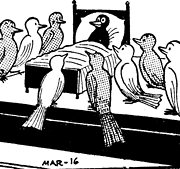|
my list is gonna be coming later as i'm still trying to play more games to kick out the worst games in the list. it's a top 50, all 2021 releases, and i've already got the worst ones pushed out so now it's just me trying to have some still-decent games on the back end i also am gonna redo my 2020 list with some of the 2020 games i missed from last year, that's gonna be a much much much much shorter post so you don't have to worry about me cloggin up the thread
|
|
|
|

|
| # ¿ Apr 24, 2024 01:53 |
|
Rarity posted:Less than 24 hours and we already have over 100 unique games listed! this was such a good year for games haha
|
|
|
|
there's plenty of good games in 2021 and people just have different tastes and maybe shouldn't just have a consensus #1 all the time
|
|
|
|
BeanpolePeckerwood posted:some pretty prominent lists missing from this thread atm e: I have decided that if I've played through enough of a long-form game to form a solid opinion on it I will include it in the list, it's just that it will have a review score that could later change on revisit. an example of this is Bonfire Peaks, which has 200 puzzles and is 15 hours long. I've already got a pretty good opinion on it after solving 30 of the puzzles. The 7th Guest fucked around with this message at 16:23 on Dec 24, 2021 |
|
|
|
Jay Rust posted:Forgotten lovely, would NOT be how I describe Forgotten City, itís a neat game and Iím happy it made peopleís lists even if it didnít quite make mine
|
|
|
|
https://i.imgur.com/vW6tLFV.mp4 Hi geeks and gamers I will spare the usual formalities about talking about the world being on fire and just talk games. 2021 was not as crazy productive for me as 2020 in finishing games, but it was still a pretty packed year from end to end. I was able to get to older games on my Steam backlog and play through some longer RPGs like Octopath Traveler and Bravely Default. My urgency to play through 2021 games only really picked up towards the beginning of Fall, which means that I definitely missed out on some really good games. Here's the sorrowful list of 2021 games I did not have a chance to buy/play but wanted to (I promise!!): Great Ace Attorney Chronicles, Ender Lilies, It Takes Two, Shin Megami Tensei V, Metroid Dread, Eastward, Stonefly, Retro Machina, Overboard, Astalon, Alekon, Beard Blade, Toodee and Topdee, Glyph, Arietta of Spirits, Labyrinth of Touhou 2, Hoa, Gamedec, Severed Steel, F.I.S.T., Evil Tonight, Conway, Transiruby, Subway Midnight, Okinawa Rush, Super Sami Roll, Wolfstride, Tails of Iron When you consider that's over 25 games right there, had I the money and the time I could have had a bigger list stacked with bangers from front to back. That's just how good a year this was, especially for indie gaming. But oh well, there's always the 2022 honorable mentions list! Speaking of which...  Indie games were excellent enough that I was able to compile a top 50, but before we get to THAT list, I uh, I definitely played more than 50 games this year hehhhhhh. Quite a few more (see the logo). I got a chance to catch up on some 2020 indies I missed, and a couple of them were truly fantastic. Not everything was a winner though, so consider this list a bit of a mix and match of 2021 games that missed my Top 50 and 2020 games I missed from last year. My esoteric scoring system: I grade games on five criteria: Gameplay Loop, Variety, Art Direction, Sound Design, and UI/UX. The back three are obvious. The gameplay loop should theoretically be obvious: how would I grade a general cycle of gameplay, but the variety category is a bit more vague I guess. The point of it is, how much iteration is there, is there variety in mechanics, is there variety in tasks, is there variety in environments, all that stuff can go into consideration. A Nintendo game, for example, will constantly reveal new mechanics and level gimmicks over the course of a campaign to keep surprising you. But you can't have one without the other... a game that is not fun to play won't benefit from design flexibility, and even the most fun gameplay slice will get old if it never changes. So I score each out of 10, then multiply the GL by 3, the VAR by 3, and the Art Direction by 2 (I think art is still important!!). Add 'em up. And this ends up in a review curve that is a bit less "anything below 85 sucks." It's more like.. 90-100: Holy poo poo this is Phenomenal! 80-89: Wow this is fuckin' Great! 70-79: Hey this is pretty Good! 60-69: Y'know, it's alright, it's Fair 50-59: Ehh, it's Mediocre 40-49: Bleh. This is Poor. 0-39: It's Broken/Beyond Salvageable/Won't Launch/Etc. (I'm not exactly going to play through a game that is extremely bad so I will probably never give a score this low.) Okay, anyway, without further ado:  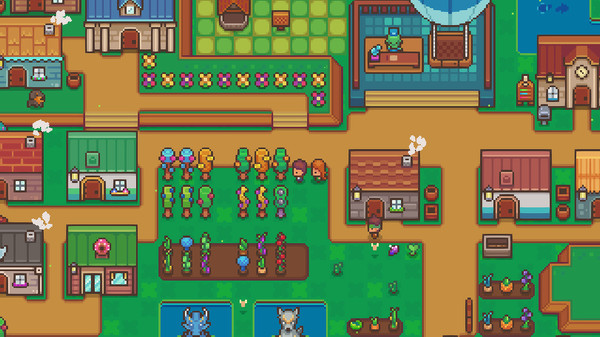  Unlike a couple of other Crossing-likes, Littlewood mostly hits its mark. With unassuming pixel art, you play as a hero that has already saved the world and is now just wanting to live a normal life. As you put down roots, you start getting villagers who would like to live in your town as well. You build up said town house by house, villager by villager, each who have decorative needs to fulfill, and also can provide some services and tools. There's farming, there's fishing, there's bug catching, there's dating, there's terrain editing, just on a more compressed level than, say, Stardew Valley. And it plays perfectly fine, and can be quite addicting to play, as the game uses the stamina system from Stardew rather than real-time clock checking like Animal Crossing, so you can just binge a whole ton of it if you want.  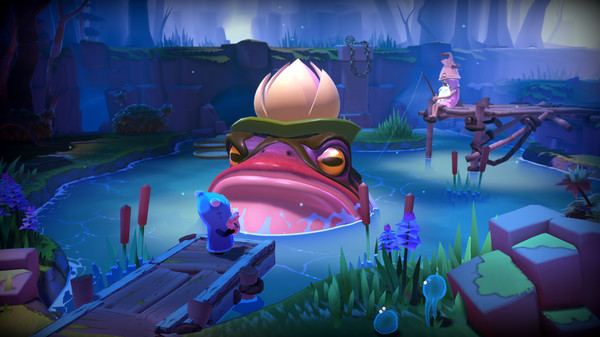 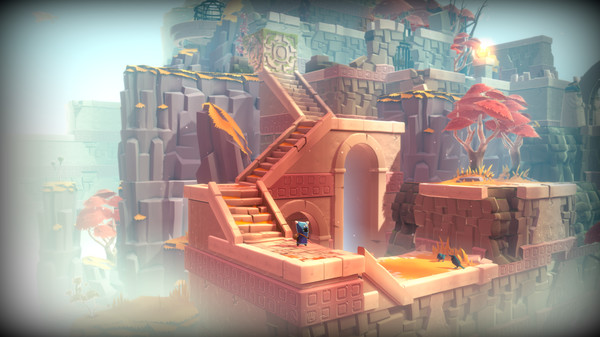 Hello Games has done more than just repair the reputation of No Man's Sky (and their studio). They've been busy, and last year they released this wonderful little puzzle game that combines adventure gaming with puzzle rooms, and a tiny bit of existentialism. (It probably helps that it was co-developed by the team behind WiiWare classic LostWinds. As a cute little ember critter that has seemingly gotten lost in the afterlife, you are tasked with finding other lost souls and rescuing them, before you can move on yourself. You'll roam around the world talking to odd characters and doing overworld puzzling, and then find the souls trapped in statue, which transitions you to a specific single-room puzzle, and these are some solid puzzles, not quite Draknek-level but still pretty good. It's just a really charming little package, with emotional music beats, solid art direction and a cohesive world design.  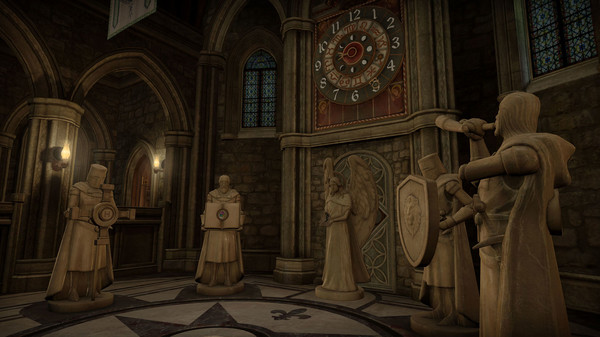  The series that you can't talk about without people making That One Joke, The Room started on mobile, came to PC, and now we've got a full VR game (with accompanying VR tax-- seriously this game is way too expensive). If you like the other Room games, you'll like this one, as you get up close and personal with the puzzles, and instead of clicking from node to node, you just point and warp to them. Though it had to be developed with a bunch of VR sets in mind, it still looks alright and the controls are intuitive (just make sure you have good tracking on your headset). I will say, though, that the series has gone far away from its roots. In the older games I loved seeing a device that would keep opening up more and more as I found hidden latches, to reveal more hidden latches and drawers, to reveal more puzzles and latches and drawers. Now it's not so much about intricate puzzle boxes anymore, and is instead just general Myst style puzzling. The Room VR specifically has a lot more inventory puzzling, and brings back the "shrink to tiny size" puzzles from Old Sins. Which is fine, it's just.. I miss what it used to be.   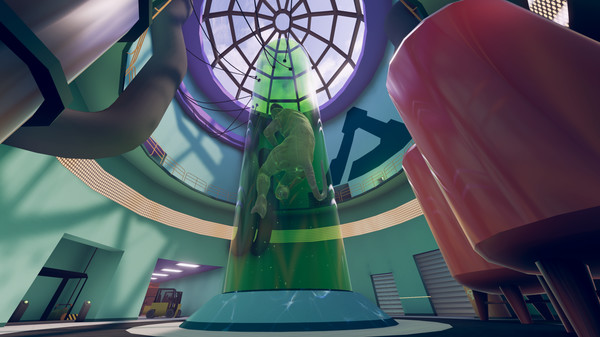 I can't speak to the original Vertigo (which, is neither the Alfred Hitchcock film or the upcoming game based on the Hitchcock film, except that it's not based on it but just using the license... look it's dumb, go look it up), but I had a lot of fun with the short runtime of Vertigo Remastered. Essentially a Half-Life esque shooter experience in VR, Vertigo's dual-handed gunplay feels great and is by far the highlight, though the game is pretty cartoony and not photorealistic, so this isn't Boneworks or whatever. There's a bit where you're shrunk down, some monorail shooting, and some goofy bits of dialog with the conceited CEO. Some awkward climbing of vines as well? I guess they wanted to get in every tool from the toolbox.  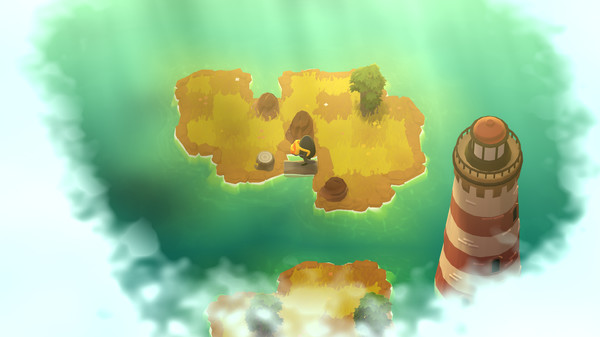  Draknek's big release in 2020 was by far their very best, building on what they learned from A Good Snowman is Hard to Build to make a massive non-linear open world puzzle experience that is as good as puzzle games get outside of Stephen's Sausage Roll. I put this right up there with Baba is You, and the puzzle format couldn't be more simple on paper: you reach an island, chop down trees, then push the logs into the water to form bridges to other islands, or push the log away from the island while you're on it to sail to a different area of the map. The puzzle design is just fabulous, and the game is littered with fun decor, as the islands are presented as a museum to humanity, so you'll find exhibits dedicated to televisions, washing machines, strollers, umbrellas, etc with an adorning plaque guessing as to what its function is. But what really makes Expedition work is the ability to seemingly go in any direction and find puzzles (it should be noted there IS a final location and there are also fast travel points), it feels like a limitless world of exploration, and every time you sail away from an island to find another region it's like holy poo poo, there's still more to this world! This game would easily go in my top 50 of all time. I just unfortunately didn't get to it in 2020 proper. But I've rectified that now! And if you've played any Draknek game before (Snowman, Cosmic Express, Sokobond) you've got to play this one.  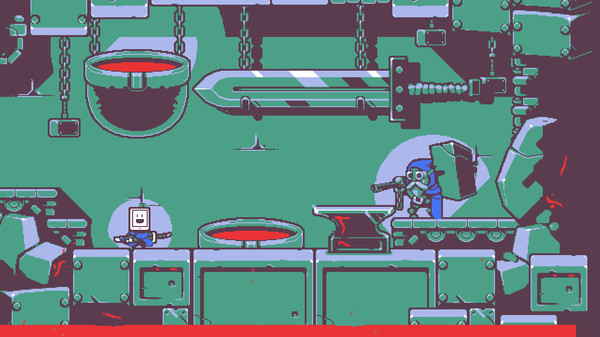 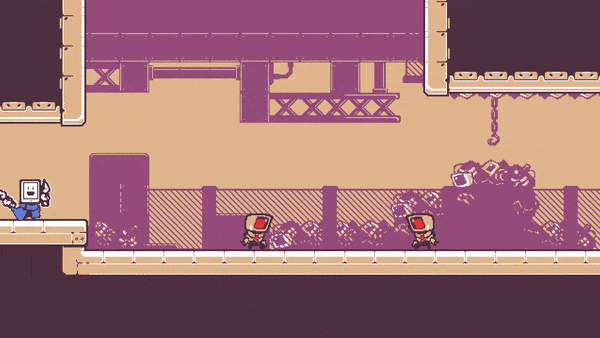 The reason I enjoy Metroidvanias is because there are so many different ways to do them, from action to puzzle (Toki Tori 2) to information-gathering (Outer Wilds) to even more esoteric options like pinball. Sometimes I enjoy a slower, more methodical approach, and sometimes I want something blisteringly fast. Kunai fits into that action slot and does it very well. You're some sort of computer with a katana going around beating the poo poo out of everything you see, and attempting to stop a second apocalypse at the hands of a rogue AI. The gameboy color aesthetic is on point, and the action is nice and crunchy, with fun combat and fun bosses and fun movement. It's not a top 10 Metroidvania by any means, but it's a highly enjoyable one. Did I mention it has a grapple hook? I mean I guess you saw it in the GIF. The grapple hook is good.  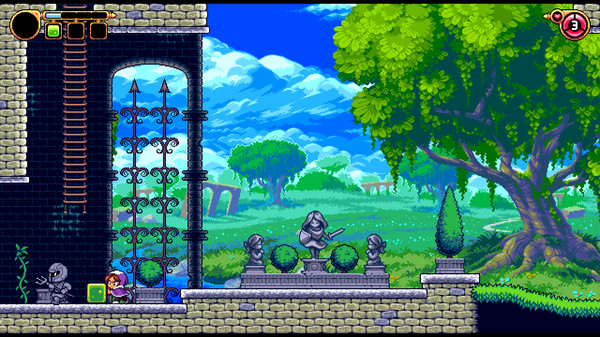 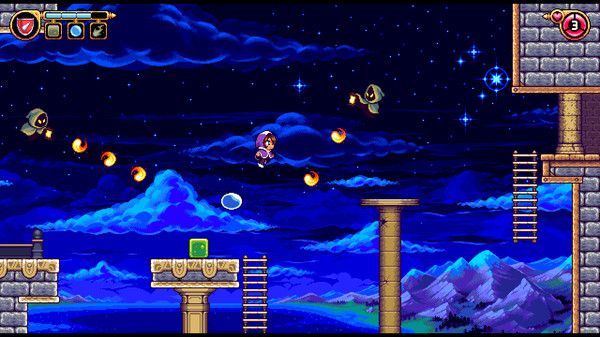 Now for the puzzle side of Metroidvanias, Alwa's Legacy is a sequel to the more methodical and NES puzzler-inspired Alwa's Awakening, which fulfills the promise of the ending of Awakening to move into a more colorful world, and holy poo poo is this game colorful. This game has the most gorgeous backgrounds I've ever seen in a pixel Metroidvania, it's just a beauty to look at. The game also highly improves on the first game by offering much more convenient fast travel, spritelier movement, more varied biomes, and better application of the tools given to you. It makes Awakening feel much more like a prototype in comparison. Very very good!!   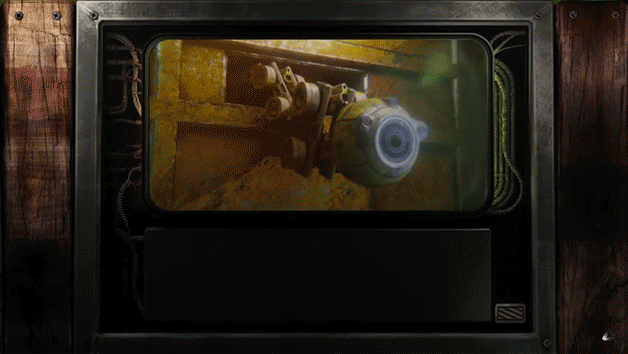 What a weird trip this one is. By the developer of STASIS, Beautiful Desolation is a point n click adventure that echoes games like Fallout by putting you in a wild post-apocalyptic environment where most of humanity has become strange post-dead cyborg monsters. There's no combat, this is a pure point and click adventure, but there are factions and major decisions that impact entire colonies and can play a role in the ending you get. The real delight is the aesthetic, which combines the look of a 90s isometric CRPG with pre-rendered CG FMV dialog sequences. All of the characters you talk to are so uniquely designed and strange that it kind of gives me Laser Lords vibes but way more professional (perhaps Supergreatfriend fans would understand that reference). I wish that there wasn't so much time spent flying from zone to zone, and the Brotherhood's way of handling hotspots is a bit annoying compared to other point and clicks, but I was willing to put up with those things just for the weird spectacle that this game had to offer.   I wanted to get into more interactive fiction this year but just didn't find the time. This work, by the author of PataNoir, is an interesting concept. You're a classical detective who has gathered everyone together in the parlor to announce the murderer. However, you actually know nothing about the case, and have to stall for time while ekeing the details out of each of the suspects without drawing suspicion. The more you learn, the more topics become available to discuss with the other suspects, who will start to exhibit signs of nervousness that you can hone in on. One person might start rubbing their neck to hide a rash, another person might have shaky hands, etc. It's not that you're an incompetent detective, just an unprepared one. Of course, this is interactive fiction, so it can play out in a lot of different ways. You can accuse anyone, or you can go for such a long rant about your mustache, for example, that the killer gets fed up with you and murders you. And that's where a lot of the fun lies. It's not quite as flexible as other IF, but it's cheap and a decent way to spend an afternoon.  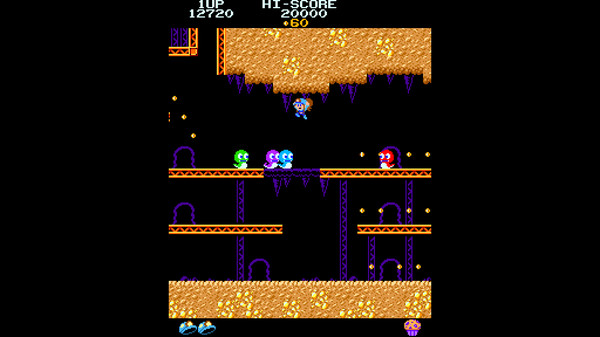 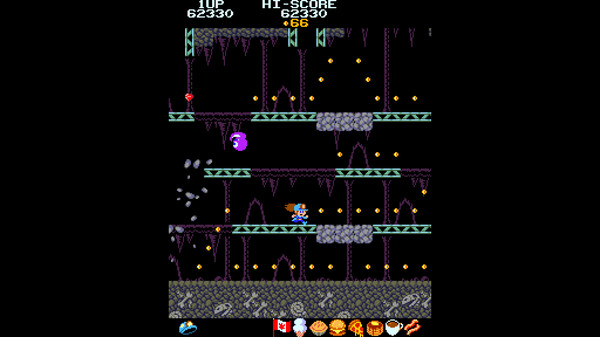 A throwback to classic arcade games, Annalynn plays like a combination of Pac-Man and Mappy, as you roam around a dig site hoovering up all the gold while avoiding enemies. Honestly I don't have a ton to say about the game, it's just a decent timewaster that feels period accurate and would play well on an actual arcade cabinet. --- I will update this post in the future with more honorable mentions, as I am trying to get through more games but won't have time to finish all of them before my actual GOTY post goes up before the deadline ---  Now, these aren't factually the worst games of the year, because surely a game that doesn't even launch or bricks your computer is more deserving of that title. Mostly these are 2021 games that I had looked forward to playing and really let me down. RARITY: This is not my top game list! (Quite the opposite!) That is coming in a future post because it would be way too long to include here!  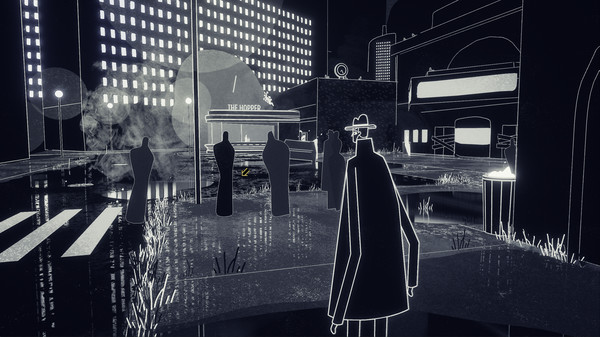 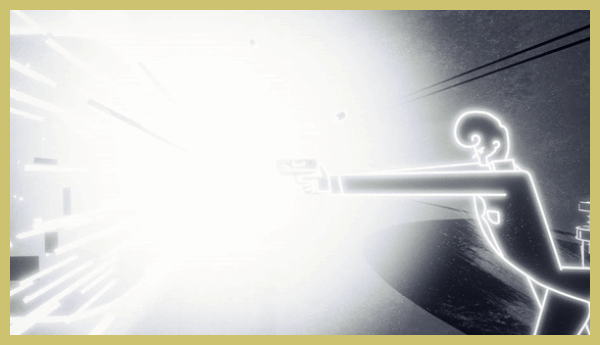 Easily one of my biggest disappointments this year, Genesis Noir wastes its absolutely jaw-dropping art direction on the most basic, uninteresting gameplay I've seen in a game of this level. I actually would have preferred the game NOT have puzzles and be more of a walking simulator, than waste time with boring, repetitive, simple puzzles that have no real connection to the themes or story. On top of that, the game softlocked multiple times, and one puzzle repeatedly bugged out that caused immense frustration because objects that were supposed to connect just wouldn't because the engine accidentally drifted them too far apart. It's a shame, because the music is great, the art and animation are as good as any game I've played this year, and the concept is very cool. But "it's not about the graphics, it's the gameplay" applies to more than just photorealistic AAA first-person shooters. Well, at least nothing else I highly looked forward to disappointed me this yea-- ah gently caress  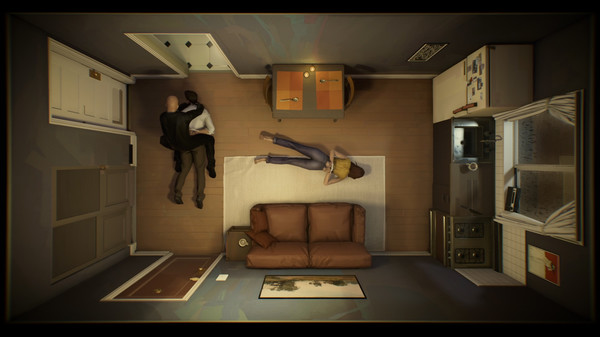 I was waiting on this one for a while, a time loop bottle-episode of a game in an apartment that feels part stage play and part time-fuckery. Well, that's what I was expecting anyway. Honestly, there's already been enough written about this game. I really liked the first hour of the game, when I thought that there'd be flexibility to interactions and the bizarre plot twists hadn't happened yet (and, even being honest, the plot twist was so stupid that it kind of owned, in a 'trash game' way). It's in the back half of the game where it completely falls apart (similar to my worst game of the year winner). The biggest problem with 12 Minutes isn't actually the story, but its failure as a game itself. With such a small set, EVERYTHING should have had an interaction, and there should have been a lot more to interact with. I have played a lot of one-room adventure games from AGS competitions, and having a reaction or observation to every possible interaction is a staple of the subgenre. You can flush things and hide them in vents, but this only has one practical application. If the game wasn't trying to be "prestige" and just wanted to be a fun game, there'd be a reaction from the wife for, say, putting the cake in a vent. Or using the photo on the fridge as a plate. How about reactions to putting things in the closet? Nope, the closet is for hiding and using the phone and that's it. The lightswitch has a specific use case and that's it. Please follow this specific ordered instruction sheet to win. A smart timeloop game allows for better flexibility for how the player wants to solve all of the problems in one run. The Forgotton City, for example, has a sizeable time limit and gives you ample time to route your way through the city and quests the way you prefer to. Elsinore offers a multitude of endings and consequences for your decisions. Whereas games like this and Timelie are just about trial and error, trial and error, trial and error, until you do exactly what the game wants you to do.  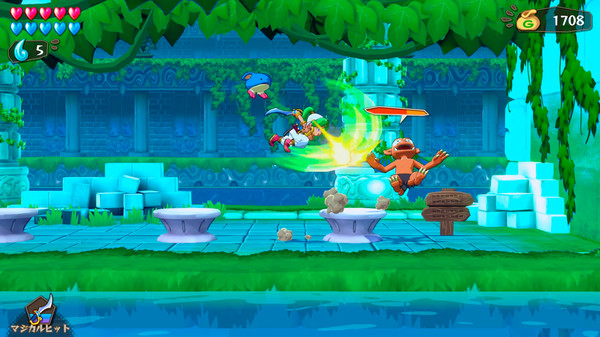 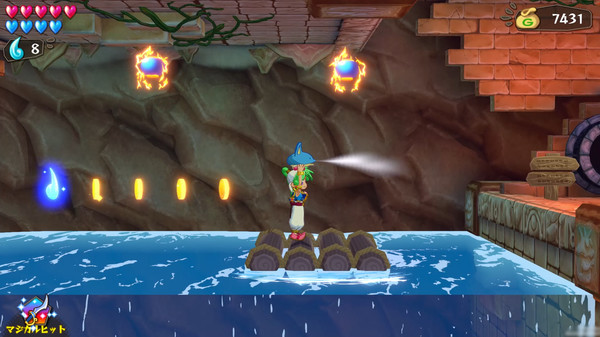 Until the Wii Virtual Console, Monster World IV had never reached American shores, but by the end of the PS3 it had not only gotten a US release but a localization as well. Now, with the rise in popularity of the series (namely, the success of Monster Boy and Dotemu's Dragon's Trap remake) comes a remake of this once-niche game... and... oof. If you saw the early trailer for the game and thought "well this looks rough but they'll clean it up and polish it before release", I've got bad news. This is about as clunky as modern remakes get, almost feeling like an Xbox Live Arcade-era remake rather than a 2021 remake. I don't know if this was a lack of budget thing, or if they felt they had to stay too doggedly close to the original, but nothing feels good in this game. Combat feels bad, running and jumping feels pretty bad, the localization is stiff, and the presentation's barely holding together at the seams. It looks OK, with at least a couple of nice looking environments, but the animations are robotic (which is not a surprise given the robotic feeling of the movement itself) and when you compare it to the much prettier and more fluid-feeling Dragon's Trap, it's just a bizarrely amateur adaptation.  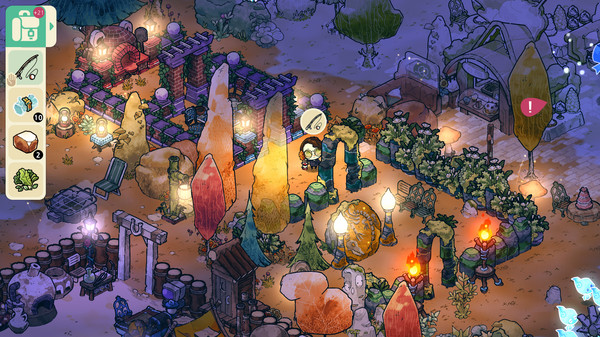  Imagine Animal Crossing with all the fun sucked out of it. While New Horizons designed itself in such a way that it could be played multiple times in the day and still have things for the player to do, everything about Cozy Grove is a waiting game. Trees regrow every 3 real-time days, there are only a number of quests available every day and sometimes no one will have a story quest for you. Some quests require an ungodly amount of resources that will take weeks to harvest. And in all of that, there's just really not much to do. The island is small even at its max expansion, and even if you want to decorate, your resources are just too limited to do much of that. There's no aquarium or fossils, there's no minigame island, there are no holidays, there are no 'event' days at all. It's barebones and toe-deep. I played this on my phone over the course of 120 real time days and... that's about the closest I've come to sunk cost fallacy this year. Thankfully I didn't sink anywhere near this amount of time into anything else this year.    Usually a demo is a good indicator of what the full game will be like, especially on the indie side. I've gotten a lot of my wishlist additions from playing demos (and a lot of games in my top list were once demos I played). Kitaria Fables seemed like it would be my thing, an ARPG with a little farming like Rune Factory, starring a cat. And the demo was fine.... The full game, though, revealed its true colors. This is a GRIND. The gameplay does not iterate beyond the demo, and all there is to the game is constantly grinding for enemy drops, which are required for, well.. everything. Weapon and armor upgrades, sidequests, main quests. This includes boss drops, which only drop once a day, so you have to get up, go to the boss, fight it, get the drop, go back to bed, sleep, repeat, multiple times, so that you can finish a certain quest or upgrade your sword so that it does more than piddly damage in the next main quest area. There was also a couple of hours where I couldn't progress at all because you apparently were required to do an EASILY-missable side quest on the outside of a town before the next main quest. Just completely baffling. With Rune Factory 4 Special on Steam and RF5 right around the corner, there is no reason to get or play this one.  :format(webp)/cdn.vox-cdn.com/uploads/chorus_image/image/69124669/6_4k.0.png) The first half of Fantasian was a flawed but interesting take on the classic PS1-era of JRPGs, by Mistwalker, who aside from Sakaguchi, has been around the block (Lost Odyssey, The Last Story, Terra Battle). The second half is a descent into true madness. Most of what you know about Fantasian is its presentation, which uses photographed hand-crafted backgrounds and is extremely charming. When playing, it absolutely feels authentic to the era it's attempting to emulate. It also has some cool concepts, like the Dimengeon, a device that lets you turn off random encounters and allow them to accumulate, until you decide to fight all of them at once. And Dimgeneon battles, though lengthy, are very satisfying, with the game's combat system allowing for arched, AOE and line attacks, along with powerups placed on the field to hit in your attack path. Why is it the worst game of the year for me? Well it's that darn back half. See, Fantasian was split up into two halves, the first releasing in 2020 and the second releasing in 2021. The first half, though having a slightly stiff localization, was perfectly fine, and had it stayed at that quality, it probably would've showed up around the middle of my top 50 list. The second half of Fantasian is by far the deepest plunge I've seen in a JRPG since... well, the PS1 era, I guess. 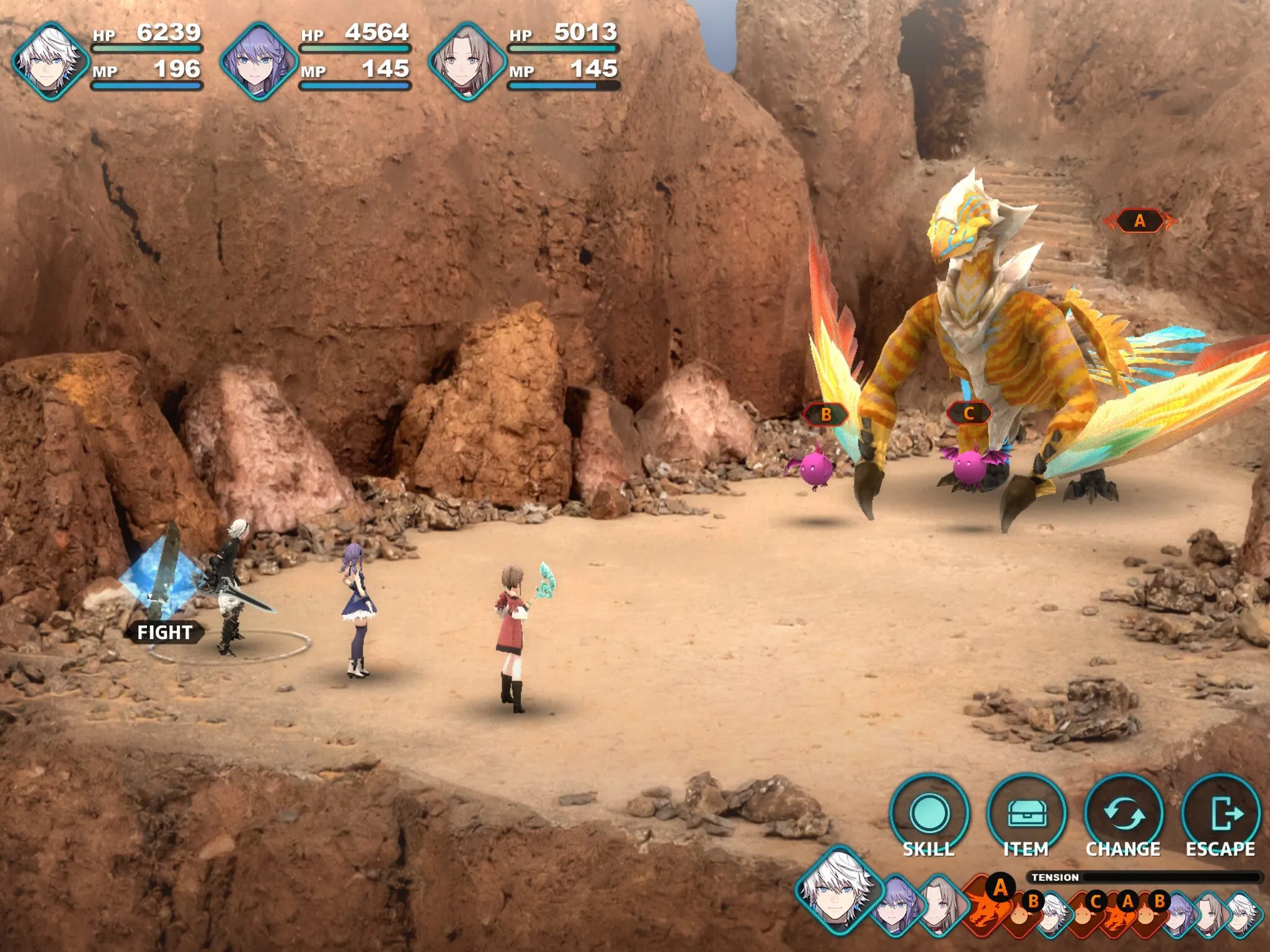 The game's initial strength, its puzzle bosses (bosses that have a trick or gimmick to them that you have to figure out to defeat) become its bane as the difficulty of the game is tuned beyond masochistic. Forget nightmare difficulty, this is Freddy Krueger nightmare on elm street difficulty. The game's recommended level for quests? You may as well bump that up by about 7, if not up to 10. The whole 'puzzle boss' concept disintegrates when you solve the puzzle and your party is still wiped. There are bosses with some absolutely unfair attacks, such as spawning up to 30 swords that you have to destroy in one round or they all attack your party at once. But there are just really dumb aspects to this second half anyway. One boss asks you a bunch of questions, which determines what they'll do on their turn. This boss takes about 20 minutes to get through the quiz portion, at which point he takes the gloves off and starts attacking you with much stronger attacks. Given that there's no indication this is going to happen, it can be easy to hit a TPK and then... have to do the extremely boring, extremely slow 20 minute quiz portion again. There are also quest triggers that are not obvious. Part of the map is locked off until you do some esoteric poo poo to get it open.. and that part of the map has locations integral to the campaign. Barudak and I were constantly swapping notes in the RPG thread as there was no walkthrough for the game and the two of us were constantly puzzled as to where to go, or frustrated as hell by each new boss. I mentioned the grind in Kitaria Fables. It's kind of a nightmare here too. Experience in the back half is only really gained by filling up your Dimengeon and fighting at max capacity over and over. And only by doing this in one area of the game, where level 60+ enemies show up. Remember, you need to be many levels above the 'recommended level' for quests, and at the end of the game, this means you'd need to be at a level that the game doesn't seem to even want you to reach without massive grinding. I never could beat the final boss. I don't know how people can. It just has so many ridiculous and difficult phases and its final form has multiple 'phases' it shifts between, including a variant of the '30 swords' attack where you have to destroy a bunch of panels with randomized elemental weaknesses. Randomized, so there's no simple combination of arc/AOE attacks to take them all out before they all attack. There's also two black holes that can swallow party members and take them out of the fight. Ughh I'm remembering more and more of that fight and it loving sucked!!!! Just.. don't play it. You might play through the opening hours and get hooked on it, and then fall into the sunk cost fallacy trying to complete it as it makes you more and more miserable. Plus, you need an Apple Arcade subscription anyway, so maybe that barrier in and of itself will stop you. -------------------- And that's it for part one! Part two will be my proper TOP 50 GAMES OF 2021 list. I know only the top 5 actually matter, but what's the harm in doing ten times that? None to my mental state that I can think of!! I'll post that before the year wraps up! The 7th Guest fucked around with this message at 06:27 on Dec 25, 2021 |
|
|
|
YoshiOfYellow posted:I knew I'd end up regretting doing my list early because now I've played & finished Life is Strange: True Colors and want to fit it on my list somehow.
|
|
|
|
i have a few 2021 games in my top 20 that haven't shown up on people's lists yet, at least i don't think. it's an opportunity to get them some more visibility at least! also i am angling to get to a top 69 list instead of a top 50, i'll see how close i get by NYE
|
|
|
|
https://i.imgur.com/7Id2Bjb.mp4 Hi everyone. I gamed very hard this month to prepare and finish this list and I feel good about it. Just as a couple of reminders, my scoring system is based on Gameplay Loop, Variety, Art Direction, Sound Design and UI/UX. 90s is phenomenal, 80s is great, 70s is good, 60s is fair (nothing goes lower on this list). I did not get to/buy these games this year and will just play them in 2022: Great Ace Attorney Chronicles, Ender Lilies, It Takes Two, Shin Megami Tensei V, Eastward, Stonefly, Retro Machina, Overboard, Astalon, Alekon, Beard Blade, Toodee and Topdee, Glyph, Arietta of Spirits, Labyrinth of Touhou 2, Hoa, Gamedec, Severed Steel, F.I.S.T., Evil Tonight, Mail Mole, Conway, Transiruby, Subway Midnight, Okinawa Rush, Super Sami Roll, Wolfstride, Tails of Iron, Mundaun, Returnal, Tales of Arise, Ratchet & Clank: A Rift Apart, Outer Wilds: Echoes of the Eye, Wildermyth, Cruelty Squad, Praey of the Gods, Time Loader, They Always Run, Exo One, Elec Head, Treasures of the Aegean, Pronty, Everhood, Resident Evil 8 One thing did change after I finished my top 50 list.. I kept playing games and wanting to find a space for them. So I came up with an  Last thoughts... - 3D platformer fans feasted this year. 8 different 3D platformers made my list, ranging from OK to.. well, truly something special. And that's without playing It Takes Two! (or Mail Mole, or Super Sami Roll, or Ratchet & Clank, or..) I guess we can definitively say the genre is back, finally. - Recency bias? Almost two-thirds of my list comes from the second half of the year. Granted, the holiday season is always the biggest season for games... although, this summer was also pretty incredible... over a dozen games on the list were released in August alone. My top 5 had actually been unchanged since the summer... until... yesterday lol. Alright, here's the list:  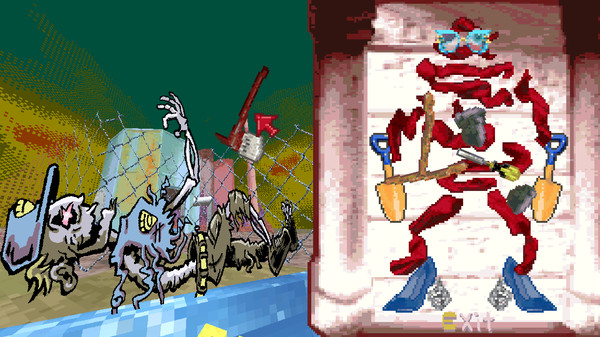 While this takes the bottom spot in my list, it's by no means a bad game, it's just... really out there. Originally featured on the Haunted PS1 Demo Disc, you're a mummy digging through sand to find objects to give to the different characters in each area, who might give an item to you to pass along.. or you might get a tool, or you might grow as a mummy so you're not just dragging along the ground. This is maybe an hour+ long and is super cheap, and maybe even just the demo will be enough for you, but it's worth playing just for the oddity of it, I think.   I just didn't give this game enough time to give it a higher ranking, but also.. I don't know if it necessarily deserves a higher ranking. We've got high concept but low execution with this game. A self-coined "brainpunk" story, the world of Scarlet Nexus is kind of cool to look at but also kind of shallow. Beyond its aesthetic trappings you'll be seeing a lot of the same areas repeatedly and you'll also notice a lot of invisible barriers that reduce the complexity of stages to something out of the PS2 era. The game feels like it wants to be a Platinumgames action title, with stylish animations and lots of chaos. But I will say it's a bit too sluggish and reliant on cooldowns to fit their style. The cooldowns in this case involve asking teammates to lend their assistance, while you do the primary attacking. Depending on who you play as, you either get conventional hack and slashing or more telekinetic fighting and object chucking. The telekinesis combat didn't quite feel weighty enough to pass as a heavy alternate to the standard hack and slash combat, at least for me. But I also had an issue with the skill trees.. this is another game that locks stuff away that should be unlocked from the start. But I do think it's interesting. The world and premise are cool, the action is competent enough, and the bonding events feed well into the gameplay loop by offering rewards but also providing timely breaks to keep things from sinking into tedium. If I had given this game more time I might have come out with a more favorable impression of it, but the repetition sticks out the most to me. I may try again in 2022 with the other character and see if I vibe with it a little more.  If you've ever picked up a highlights magazine at a dentist office and saw a Spot the Difference puzzle, but resented that another kid already circled it... here's a whole game about spotting differences in cute/quaint 3D panoramas. Set the camera spinning at whatever speed feels right, then take a look between the left half of the screen and the right half and find the differences. That's really all there is to it. But honestly this type of puzzle does appeal to me some, kind of like a Hidden Object Game. There's a lot of different panoramas to visit, and I have a feeling that this game (much like Sizeable) will get content updates in the future. Just a hunch.  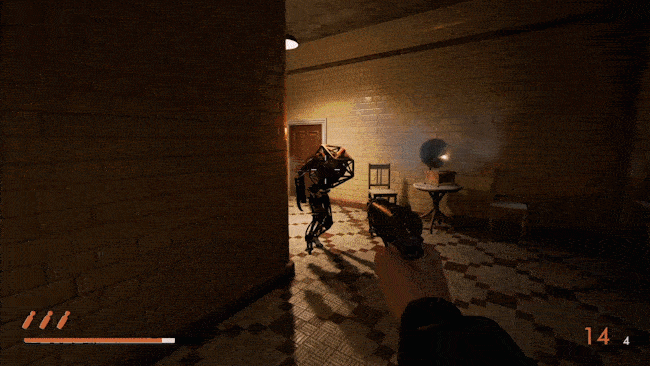 2022 was not an amazing year for first person shooters, although if you like multiplayer shooters, there's a lot to suit your fancy. For solo campaigns though, your choices are a bit more limited. The most notable indie FPS release this year outside of the retro space was Industria, a nod to Half-Life 2 where you are transported to an alternate universe full of rogue robots and have to manage your ammo carefully as you take them on. This isn't an amazing game, as the gunplay is a bit weak and the runtime is very short and ends on a cliffhanger. But you could do worse. It's got some nice vistas, a couple of decent setpieces like charging up a hill or navigating a greenhouse to reach a lonely old man's apartment. This is definitely one to get for a sale price though, I had gotten it via the Epic $10-off coupon and felt that I could not possibly spend a dollar more for the experience I had here.  Moonglow Bay needs a bit more time in the oven but there's some promise here. Having lost someone dear to you, years have passed and you've decided you're going to get back out there... no not the dating scene, the open waters! Moonglow Bay is a life sim focused around fishing and cooking, where you go out on your boat, catch a bunch of fish, donate new ones to the aquarium, and then head back home to cook all sorts of tasty dishes to sell to the townspeople and fulfill quests. This money then allows you to invest back into the town by renovating buildings which then become new locations to visit, with NPCs that give you tips on fish to find as well as possible new sidequests. The main issues I have involve the look and performance. The game runs like absolute poo poo on Xbox One X (15fps max), and even on a Series it struggles to maintain a stable framerate, despite a relatively plain voxel look that only feels slightly more involved than Minecraft. There are also bugs in general with the menus, and sometimes quest locations will point to places you can't enter. So the game's going to need some patching up in 2022 to get to a place where I can give it a universal recommendation.  Ys IX is a solid ARPG with wide open spaces, a lot to explore and secrets to find, and a solid gameplay loop connecting hack and slash gameplay with tower defense segments. But it's not the Ys that I fell in love with. My first Ys game was Origin, and it was so blazing fast and so fun, and it kept its focus on many varied dungeons and bosses, with rad music and slightly Metroidvania-y upgrades, as well as the gem drops that gave you stackable buffs, incentivizing you to keep mashing. Then I moved on to Oath in Felghana, then the very first 2 games. I just couldn't get enough. But starting with Ys Seven something changed. The game became less about Adol the whirling dervish pinballing through enemies like the tazmanian devil, and more about a group of uninteresting characters next to Adol that you had to constantly switch to in order to deal proper damage to specific enemies. And the action got slower... and slower... and now is just a conventionally paced ARPG with a couple of fast-attacking characters. This game in particular really wants you to care about the ragtag vigilante group Adol is shackled to, which feels like an attempt at a backdoor pilot, and it did not work on me. I do not care about these characters. I don't care about the repetitive tower defense segments just to expand the explorable area. I don't like the bland gray prison town most of the game takes place in, and constantly going back into the prison itself. Most of this stuff will not bother the average person and I put the game in my top list because I guarantee you will like it if you like ARPGs, but as an Ys fan I want better, and hope the next one is a rethinking of the franchise.  After a couple of decent Poirot games, Microids turned the franchise over to Blazing Griffin, the developers of Murder Mystery Machine, and the result is functionally very similar to that but in the Agatha Christie universe. You'll talk to various witnesses, find clues, and then form connections on your mental pinboard to create new conversation topics and conclusions. After first dealing with classism and injustice involving stolen jewelry, you are invited by a person involved in that case to be on hand for what turns out to be a mansion murder mystery. I thought it was alright, but has a similar issue to MMM in that you're kind of railroaded to conclusions, and sometimes it's not obvious which clues you're supposed to connect as there are too many similar nodes. The nodes on the mental pinboard are also arranged in a way that makes sense from a graphic design standpoint, but also kind of gives away where the connections are supposed to be made, as there's convenient equidistant space between clues that bisects a region perfectly. But at least it wasn't a big dropoff from the ABC Murders. I just hope BG can improve on this formula with their next game, if they're going to helm this IP going forward.  So, when I mentioned the year not being amazing, this was definitely one of the games I had in mind. Yes, Halo Infinite is on a lot of top lists, and as far as the multiplayer goes, it seems to be a Halo fan's dream game. And I'm sure there are Halo fans that like the single player campaign as well. As someone who isn't a huge Halo fan (I've played through the first three games and some of ODST), I don't hate Infinite SP. It has maybe the strongest gunfights of any Halo game I can think of, and the grapple hook is a lot of fun to zip around with. But boy is it not perfect!! First of all, I've played hundreds of games in the last several years, but Halo Infinite has to be the first that I actually started skipping the cutscenes for; the storytelling was THAT BAD. I do not care about these space orcs, and I am sick of the Cortana bullshit.. give it a rest already! Someone needs to tell 343 that their games don't have to take themselves that seriously. Everyone loves the Grunt dialog, in fact the Grunt dialog in Infinite is pretty great. If they'd be willing to give Master Chief even one character flaw or at the very least some funny quips, it'd go a long way. I read a review saying that Infinite teaches Doom Eternal "how it's done", but Doomguy is way funnier without saying a single word in the new Dooms than Master Chief is with his robotic responses to everyone. The open world is done relatively well for a game that had to be scrapped and started over... they didn't pepper the world full of pointless bloat, just a few bases to retake and a couple of minor quests to do in each region. Given that the original plan was to go for a Breath of the Wild style game, the ambition on display is significantly lower in the final product, but it's probably more appropriate for this franchise. I don't think I want Halo to be another Witcher world of question marks every 5 feet. I think it works fine. What I don't approve of is the copying and pasting of interior rooms, which comes straight out of the Halo 1 playbook and... if you're given a AAA budget and are crunching your employees to death, you'd think there wouldn't be so much Generation Zero-esque re-use. Another thing to chalk up to dev hell I guess. The difficulties don't seem quite balanced right. Normal feels like Heroic, while Easy remains Easy... so either you're a god or you're too fragile. Obviously long time Halo players play on Legendary and get a billion headshots, but as a normie, I felt adrift. Too many firefights with large groups of enemies where I could dodge OR grapple hook but not both, and both have a cooldown. (Also the dodge isn't added until several hours into the game which is weird.) Maybe they designed the campaign for co-op and didn't tweak the values for a solo player? But co-op isn't even in the game yet. So... I dunno. I actually feel like this game is better suited for M&KB, because having to switch between dodge and grapple hook as opposed to them being bound to specific buttons is BAFFLING to me. They give you tools like a scanner that helps to declock enemies, but you'll never use it because it's buried behind a quick-switch menu and you'll just be using the grapple hook forever. Apparently it's like this in multiplayer too, which I can't fathom, but if people like the multi then all power to them. Given that I did actually finish this one, Infinite is definitely a step above Halos 4 & 5. The action's more intense, it's fun to fly around in a banshee and blast encampments from the sky, the movement is probably the least worst it's ever been. I'm not sure how they intend to make a platform out of this-- obviously the multiplayer can have seasons/battle passes, but the single player world is too basic for a GAAS exploration. But at least it's a step in the right direction, and maybe 343 can make several many more steps before I can give an actual thumbs up.   This is the lowest scoring game that I would even place higher if I didn't have the restraint to understand that my trashy taste still has to respect some level of traditional criticism. Foreclosed's shooting is awful, and the stealth has really dumb AI, and when you overload your implants you have to re-apply them which makes no sense and must be a bug they overlooked. The enemy variety is limited and has stiff wooden animations. There's a segment with drones that was nightmarishly frustrating. But I don't care. This was trashy-rear end fun, with a beautiful neon dystopian comic book aesthetic and fun silly thriller story about people as commodities and getting revenge on The Man. Would play another game from this dev, especially if they learn how to make a good game.  Most people might remember Boyfriend Dungeon for its content warning faux pas that led to a bunch of Tumblr/Twitter teens sending threats to a voice actor over a character they didn't write because... voice actors aren't writers. But what actually was Boyfriend Dungeon? Well, it's a combination of dating sim and dungeon crawler whose game has been unfavorably compared to Hades which does it no favors, as the gameplay is far more basic and less dynamic than Supergiant's masterpiece. Is it fair? I dunno, this is just something you have to deal with when you enter the same space. But if you don't mind a far less dynamic version of procgen dungeon slashing, there's a lot of charm to this game. Each of the weapons you find are a potential romantic (or platonic) partner, except for a pair of brass knuckles that turns into a cat. But you can hang out with the cat and give them pets. You can also date multiple weapons before going too deep, which I did with a graffiti artist and member of an art thief troupe (and a dagger). Each weapon offers a different playstyle, and dating the weapons gets them new passive/active abilities to help you in the dungeons. It's a decent loop, and a charming presentation complete with traditionally-animated magical transformation scenes for each character. Just know that the presentation is carrying a lot of the weight here.  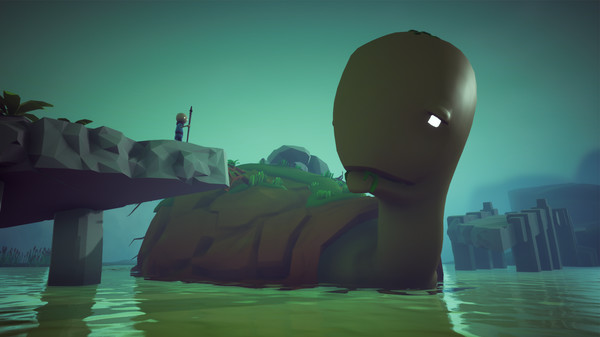 One of the more unassuming and under the radar 3D platformers, I probably would not have played Omno had it not been on Gamepass. There's a few games like that on this list, actually. Some of it just involves leaping around and re-arranging platforms to reach orbs. Some of it is collecting enough energy to power a device. There is no combat in the game; instead each area gives you a new tool/skill to utilize, like teleporting or the aforementioned sand sledding, which then gets utilized in the puzzles of that region. I wouldn't say that my life has changed and the world is more colorful and food tastes better now, but Omno is a competent story platformer where you explore large levels solving puzzles, sand-surfing, and learning about your place in the world and the people before you.  I've actually docked this game in the ranking a bit because it just threw some rape discussion at me in a cutscene without warning and that's a bit... well it's actually expectedly edgy for a retro FPS, but at the same time, kind of out of place?? I'm sure someone's gonna be like "toughen up, snowflake" but look.. it was just weird and out of nowhere. This game is actually fun otherwise. It's a Metroidvania made in gzDoom inspired by the art of Zdzisław Beksiński, the artist Bloober Team stole from for The Medium (hmm you'll notice no one putting that game on their lists this year, hmmmm what a mystery!). So you have the tight shooting of Doom with the platforming and ability upgrades of a Metroidvania.. it's a formula that works pretty well, and with the shorter runtime (around 3 hours), you get a nice breezy game through an open world of varied strange biomes for a pretty cheap price.  I don't have a ton to say on this one... meme-y games don't really inspire me to write much, I guess. Turnip Boy is a little light Zelda experience that won't run you too long and doesn't take itself too seriously. It handles.. fine. And it has a pleasant look and sound to it, complete with theme song in the credits. But I hope for something a bit meatier from this dev in the future.   The Nice Winner of the Year is Haven Park, a casual exploration game about rebuilding your gran's campgrounds. I can't quite quantify why I enjoyed this as much as I did. It's a really simple game involving going around collecting resources, fixing fences and lightposts, and building up campgrounds as visitors start to show up and either have a tip to offer or a sidequest. It could probably fall into the subgenre of "Short Hike" style chill experiences, though this is a bit smaller in ambition and budget. But it's a pleasant little game and I was very addicted to the general loop.  What a weird little game... very interesting though. Your protag somehow wound up in an extradimensional library, helping the curator fill it with books by summoning ne'er-do-wells and defeating them in turn-based card RPG battles. As you progress you will unlock additional party members to fight alongside you by defeating boss battles based on classic lit (for example, the Little Matchstick Girl). There's a lot of stuff going on (multiple combat dice, book burning to gain cards, using 'pages' to make your stats mimic an enemy you defeated, and more), and the UI manages to keep it organized in a coherent fashion, which is a big deal because it easily could have been confusing and repellant, ESPECIALLY on console. But even though you're thrown in the deep end to start, the tooltips and tutorials get you acclimated pretty comfortably. I don't know if this sort of thing could hold up to 40 hours, but I will come back to this on occasion for sure. One thing I will say, on Xbox the dialogue sounded blown out/distorted. I don't know if that's an issue on PC as well, but hopefully it can be addressed via patch. I know that this game is a spiritual followup to another SCP-inspired game but I don't think you need to have played that game to understand how to play this one. Just know the worldbuilding is there to be observed rather than explained.   I actually almost completely forgot about this game when putting my list together this past week, which I guess says something about the game a little bit. It's actually fun, a Metal Slug like experience where you're a goose wreaking havoc on everyone with guns and mechs... but it DOES get repetitive quickly with little variation on gameplay and not a ton of unique setpieces. Between missions you can buy perks and change your loadout, as well as unlock supporting characters that can fight alongside you or provide certain weapons. The art is more akin to a 16-bit game than the Neo Geo and music is just alright, but you could do a lot worse for an evening's entertainment.  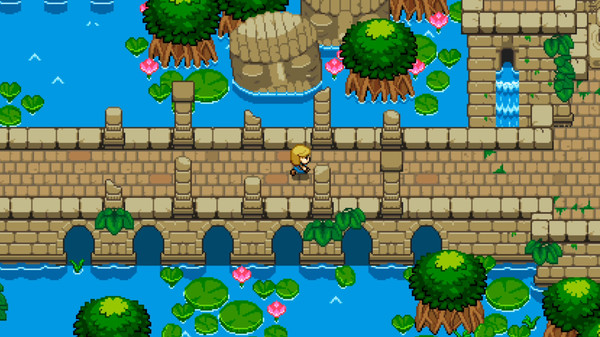 Yeah, see, I reached my "good" designation before even hitting the top 50. And look at the games in the top paragraph that I didn't get to! Who the gently caress is calling this a bad year for games? Give them a swirly. Anyway, If you want your Zelda-likes to lean harder on exploration and discovery, Ocean's Heart is a bit janky but might be up your alley. Your village has been raided by pirates searching for an ancient treasure, and your father has gone off to find answers. After he has not returned in months, you decide to set out on an adventure yourself to find him as well as save the world. In addition to searching for your father, there are lots of side quests that only give you a vague direction of the region the quest is located in, and you'll have to talk to NPCs or search areas to get the clues you need to track your objectives down. The game doesn't hold your hand and is all about letting you explore and find things youself. It's a little bit buggy and the combat is very simple, but it's a promising first game from this developer.  People Can Fly broke out (well, sort of) with the arcade action shooter Bulletstorm, a parody pastiche of AAA shooters with a melee combo/trap system and some very memorable setpieces. They showed that AAA shooters don't have to take themselves seriously to be great and worthy of your time. For some reason, they did the exact opposite with the storytelling in Outsiders, and I don't know if they were trying to make it so bad it's funny, or if they really believe they made something impactful. Now we have an overly serious, bleak post-apocalyptic story that feels like the very thing Bulletstorm made fun of, and it's told completely straight. Even the first RAGE was sillier than Outriders is. But ignoring that, the game is actually relatively solid to play, a Destiny-lite co-op shooter with classes and powers to go along with the shooting, and the 2.0 update has buffed some classes to make each of them viable even for solo play. They really like to throw a shitload of enemies at you, so a lot of encounters are about finding an ideal path through the carnage to stay alive. Complicating things are 'elite' enemies, which have just a bit too much health and do too much damage for my liking, which often forced me to clear out every other enemy just so I could deal with them 1 on 1. This isn't a Marauder in Doom Eternal situation, just damage/HP values needing additional balancing for solo play, IMO. Predictably the story ends in such a way that it can be a game as a service, but the areas aren't really structured like the planets in Destiny so it doesn't really make much sense. Worth a playthrough with friends, as People Can Fly know how to make shooters feel good, and I bet co-op is great. But you can jump off after that.   My two fave AA game directors, SWERY and Uchikoshi, have had some real ups and downs lately. Uchikoshi went from AI the Somnium Files to the pretty mediocre/forgetable World's End Club, while SWERY went from a game as fantastic as The Missing to the complete mess that was Deadly Premonition 2. The Good Life could really have swung either way. But perhaps there's a spot somewhere between where the Good Life sits?? Naomi Hayward has wound up in, in her words, a real hellhole -- called Rainy Woods (a nod to the original title of Deadly Premonition). Upon arrival, several strange things start happening. Naomi discovers the entire town turns into cats and dogs (and soon gains the same ability herself)... and then the face of the town ends up dead with a historic sword in her chest. How the game actually plays though is not as straightforward as unwrapping a mystery though, and this may cause some disappointment or frustration. Naomi is a bit of an rear end in a top hat (which I find endearing), and is mostly looking out for #1, which means getting out from under her immense debt. This means making money via photography that's right it's another photography game, binches!! I've got several in this list so get used to it! Each day you'll see hashtags on the Instagram-esque app on your computer, and you'll go out and take photos of them to rake in the cash. Of course, progressing through the game is the ultimate way to clear the debt, but having that bit of money on you will help a lot in buying from shops. See, the game is also part Life Sim, which means there's some gardening, there's some cooking, there's sidequests to help out the various residents of the town. There's hunger and hygiene meters, and if you don't shower, flies will start to swarm you. If you play with the cats or dogs, you'll become more aligned with Team Cat or Team Dog, which affects the prices of shopkeepers who belong to one or the other. So there's a lot to this game... it's not executed super well, and the amount of fence lengths without an exit is infuriating when you're trying to get to a location and are dealing with a limited time quest or the real-time clock in general. But it's still a lot more polished than the Deadly Premonition series and even a bland-feeling SWERY game is still a SWERY experience, with strange characters and quirky side stories. Plus the photography is fun, so you can always just do that.  JC Bailey makes games specifically only for one person, myself. RPGs that are all about planning a route around an open world and defeating pre-placed enemies to level up and survive in the most efficient order. Deep Rune is a followup to last year's surprise Myth Bearer that tries to add a lot more replayability by having a bunch of classes to play as that offer different benefits, kind of like Desktop Dungeons. There's also a large spellbook to compile over the course of the game by defeating bosses, and use of mana becomes just as tactical as everything else. For those unaware of Myth Bearer... if you were to take the concept of Desktop Dungeons and apply it to a large hand-crafted world instead of a single room, you'd get something close to Myth Bearer, and Deep Rune draws an even closer connection with these additional mechanics. I unfortunately picked what ended up being a pretty tough class to play as, though I was able to finish the game after a few deaths. The game allows for 10 deaths and deaths cause you to respawn with full HP/MP. Since all enemies stay gone after defeating them, this feels like almost too forgiving a compromise, but I suspect that it's just too difficult to balance the world around so many classes without needing that safety net. There's not much like these games, so I will gladly play anything Bailey has to offer.  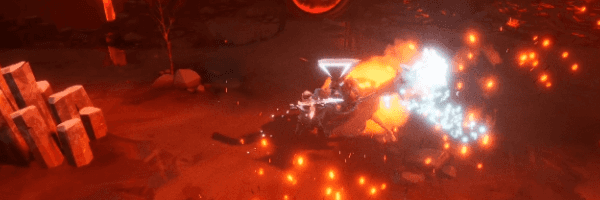 Having typed up dozens of write-ups the past week, I have no idea if I've said it already or not, but roguelites aren't really my thing, unless they're extraordinary... like Monolith or Hades or games of that level. Dreamscaper may not be on the level of those games, but it's still quite interesting. A narrative roguelite about confronting your personal demons, every night you go to sleep and fight through your nightmares, while during the day you make connections with people around the city which grants boons, as well as engaging in other activities to expand the dreamscape or improve the loot. Meditating allows you to build permanent buffs, your sketchbook adds new weapons and spells to the drop table, daydreaming lets you add new room types to each section, and more. The action is relatively fluid, although it's definitely B tier rather than A tier. But it has a nice visual style, the run lengths are not too long, and there seems to be a lot to the meta progression. It may be one to buy on sale price, but it's definitely one of those sneaky ones that you could wind up losing several hours to without realizing it.  For freaks like me that enjoy fake operating system games, this year's edition is Dum-Dum, a fictitious Windows 3.1 style OS with fairly accurate-to-Win3 games and apps, including turtle programming. Of course, there's an actual game here, in that the worst game on the computer is actually a secret backdoor to a networked connection to some programmers trapped in the company building that need the random chaos of an idiot to outwit the genius CEO keeping them locked up. Dum-Dum pales in comparison to games like Hypnospace Outlaw, but it's perfectly fine for a day's enjoyment.  Virginia was maybe a bit too abstract and random for people, so that developer has put out a more conventional sci-fi mystery story this year in Last Stop. And by story I mean stories, as there are actually three different stories running side by side (which only occasionally overlap, but in interesting ways). There's a comedic freaky friday style story that actually hits its comic beats well and elicited some laughs from me and my roommates. There's a dramatic storyline about a career-first woman cheating on her husband (refreshing to play an rear end in a top hat, actually), and a more Dr Who/Torchwood-esque story about a mysterious traveler that is making all of the people in this teen's life disappear from existence. All three stories are told very well and with sturdy suspense and moment-to-moment delivery. The game culminates in a weird Spielburgy otherworld 'adventure' climax that feels a bit like they couldn't figure out quite how to best find the common tonal ground between all three stories, but otherwise I thought this was a very entertaining Telltale-style game.  How does a dungeon crawler only a few steps removed from solely being presented to you as text become so addictive? Well, it turns out Hiroyuki Ito kind of knows what he's loving doing. The abstract board game presentation and Gumby style sliding around makes for really breezy exploration, and the riddles and secrets are enough to keep the game from tipping over from fun to tedium. And by deconstructing Final Fantasy combat down to basic Phys/Magic attack and defense, it makes for tense but very streamlined fighting. Boy howdy do I wish the composer added some percussion to those music tracks though. Like, just having two guitars cover Flight of the Bumblebee? Why are you intent on me muting the game? Don't do that. The atmospheric sound design outside of battles actually works well, but the music needs to stop.   Given that there were a couple of high profile 3D platformers this year, it makes it a little harder for indie 3D platformers to stand out. Some developers even had a 3D platformer "indie direct" event back in the summer, of which Demon Turf made an appearance in. Of all the projects from that showcase, Demon Turf stood out the most as the least.. er.. overly influenced. As a kid trying to take over Hell, essentially, you're tasked with going into the turfs of a bunch of gangs and defeating their leader. This requires collecting a battery (the Star equivalent) from 7 stages (per world) and then fighting a boss. After which point, night variants are unlocked for each level that have new batteries to collect. In addition, there are 3 cakes (Green Star equivalent) in each level, and the hub has Cartridges to find that unlock bonus levels in the arcade, and a photography minigame, and a golfing minigame... no it's not Dark Cloud 2, but it does have a lot of activities on offer. There are some oddities with this one. The game combines 3D with hand-drawn sprites, but the animations don't quite feel right. I think it's that the line of action is too upright... so the motions feel a bit weak. Also, the game has really atrocious 'combat' where you push enemies into spikes. It feels awful every time and I hope that the dev is willing to keep tweaking it. The level design is mostly fine, the camera is fully within your control, and the game has the ability to place checkpoints anywhere you want, so there's a lot to like here. It just maybe needs a little more fine-tuning.  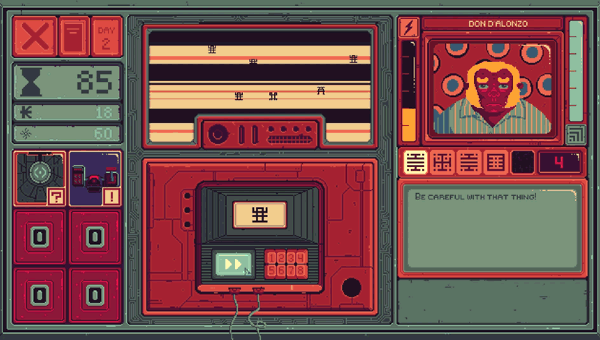 With the Papers Please dev now deep into deductive game development, there's a space left behind for other games to fill. Granted, it's really easy for a game in that vein to be too much of a knockoff that feels hollow and pointless, the way many PT clones have felt. Where Mind Scanners succeeds is in its systems. The premise is relatively standard for this game type at this point, dystopian government, limited amount of time each day, have to make X amount of money daily, have to make tough decisions. But the particular flavor here is brain therapy. You diagnose the patient by interpreting their visions accurately, then use a bunch of weird doohickeys to cure the particular brain anomalies plaguing them. Each one has its own unique mechanics, like a controller with a bunch of buttons that handles similarly to Keep Talking and Nobody Explodes, or a memory game where eyeballs blink symbols at you. This combined with the time limit gives the game a bit of a WarioWare feel. On top of that, each device drains the patient of their personality, which means you need to use additional devices to restore their personality before they become mindless drones parroting government propoganda. And some devices don't work super well, which means failure will cause their stress to spike. And naturally.. there's a device to lower stress too! Like I said, there's a lot of different systems at play here, which adds to the stress but also keeps things interesting. Unfortunately, the game was a bit too difficult for me. I didn't fail it, but I lost multiple patients due to panicking and causing them to stress out. When you're up against the clock it's definitely a lot easier to miss timing windows and cause problems.   The crossover premise of Room to Grow is such an obvious peanut butter and chocolate situation that I'm surprised it hasn't been attempted sooner: take the concept of Snake and place it in a Sokobon style puzzle game. Placed on a grid, you move your snake one tile edge at a time, trying to get the fruit in the hole. Now, bearing in mind that it is always growing and you can't overlap yourself, things get really tricky in a hurry, especially when you add walls to push off of, forks that split your snake into two heads, and other mechanics to juggle. One nice feature of Room to Grow is the ability to skip a puzzle and come back to it later. This will allow you to continue to progress on the world map, which, naturally, is one giant multi-room grid. That's right, you can't escape the game mechanics just because you're not in one of the levels! Anyway, this is one for the Snakebird fans, as it can get very frustrating in a hurry as the amount of things needed to complete a stage grow and grow (like a snake!!!), but it has infinite undo and is fine with you not solving every puzzle either. You might actually be able to finish this one!  The developers of Touhou: Luna Nights went for a somehow even stranger pull for their next Metroidvania: an OVA from 1990 based on D&D fantasy novels. Truth be told, though, you don't really need to have familiarity with the source material to enjoy the game, as the story will be lost on you but it ultimately is just a thin framework for some old fashioned jumping and slashing. Taking some pages from SOTN's playbook, Lodoss War is more weapons oriented and full of gothic environments and ghost-trailing character animations. It also mixes in an Ikaruga mechanic by giving you elemental polarity that reduces damage of the opposing elemental type. Though I prefer Luna Nights to Wonder Labyrinth, I think this is still a fine jumping on point, it looks and feels great, and has that authentic Igavania feel (though it is definitely smaller and more stage-oriented than a true Iga game).  The highest-ranking AAA on my list to come outside of Nintendo lands in the back half of my top 50, which says a lot about how good indie gaming was this year and how uninteresting mainstream gaming has become for me. The unfortunate thing is that Deathloop could definitely have placed higher if it had a better design focus. The actual gameplay itself is pretty fun, as there are all the trademarks of Arkane's renowned map design, with routes of all kinds for stealth play and chaotic action. And unlike Dishonored, you don't feel punished for going in guns blazing. The problem is that, similar to Bowser's Fury, Deathloop is trying to bridge a gap between games in a developer's portfolio, and bringing few of the strengths in doing so. In this case, it's bridging Dishonored with Prey Mooncrash and a sprinkling of Bioshock. And in the process several serious flaws pop up. Notably, the game falls into the same time loop trap as 12 Minutes by requiring you to do a specific set of instructions in a specific order, and having no flexibility whatsoever. It also only has 4 maps, which would not be a problem for, say, a 5-6 hour game, but is a big problem for a 14-15 hour game. You'll hear the same music over and over, run through the same menus over and over, and you just don't have the kind of experimentation that a time loop game truly deserves. Which is weird because it's ARKANE. I would have expected Arkane to have all sorts of creative solutions to not only deal with each Visionary, but also have ways to remove all of them at different times of day.  Though there were some stellar puzzle games this year, I wouldn't say that it was a banner year for the genre, given the genre's sparse placement in my list. Sizeable is one of the simpler but easier to get into puzzlers, and is usually pretty cheap. The game involves rotating panoramas and resizing objects in them in order to power on devices or reveal hidden secrets. And that's pretty much it! It definitely fits in the same genre as games like Klocki, and it's similarly cheap and got multiple post-release content updates.  Backpacking across America while pickpocketing across America! First revealed at a Tribeca Games Festival of all things, The Big Con is a love letter to the 1990s, from Nickelodeon style character designs, to Mission Hill style color theory, to adoration of fanny packs and squiggly patterns. Your goal is to steal enough money to save your mom's video store, by swiping pockets, putting on disguises, grifting people and making dubious trades. While the gameplay is mostly the same from start to finish, the game has a nice curve of expanding your field with each stage (starting with just a town square, then a shopping mall, eventually reaching an entire downtown area of not-Las Vegas) and having a few sidequests to earn extra scratch. You can eavesdrop on conversations, steal an item from a person and sell it back to them (or to someone else for more money), and also find themed items for an eccentric collector who will pay top dollar for them. The game is a little buggy and could've had more locations, but I thought this was a cool project that mostly lived up to how it was billed at E3.  Noir games definitely appeal a lot to me (see Lacuna later on), but I think Backbone deserves better than the backlash that it got. A mix of furry hard-boiled detective story and science fiction body horror, both genres have plenty in common when it comes to talking politics, and that's basically what you can expect from this game. The main character stumbles into seeing something he shouldn't have seen, that leads him on an investigation to uncovering a city-wide conspiracy. In the process of unveiling the truth, he undergoes a bit of a... change... and finds himself on a new, much bleaker journey. The game has a lot to say about the lower classes and the homeless and how they are seen as disposable and invisible. The third act swerve is absolutely a swerve, but it is in line with the overall themes of the game. I was fully absorbed by this one, and only wish that there was more to do as an actual game than just run from cutscene to cutscene.  What if Pokemon Snap was an actual full game and not just a prototype? I have vivid memories of those Snap kiosks in Blockbusters but I also know that the original game's content was.. pretty thin. New Pokemon Snap is an overcorrection in the best possible way. With over a dozen different areas, most with day/night variants, and all of them changing each time you level them up to feature new events and pokemon, New Snap does not have a content deficiency. It is jampacked with things to do. Each photo trip has at least a dozen different Pokemon to discover and photograph, often interacting with each other in curious ways. You might see Scorbunny hanging out with Pichu, or Pincer jumping out of a pile of dirt. But as environments level up, the Pokemon do more and more interesting things. Scorbunny doing backflips to entertain other pokemon watching, or Torterra getting in a fight with Charizard. You also gain more ways to interact yourself with the Pokemon, from throwing apples for them to eat, or playing a melody for them to dance to. As your pictures are reviewed, they're scored on different criteria, from framing to scale to the uniqueness of the pose. A Pokemon eating might be worth two stars, while a Vespiqueen doing a loop-de-loop in the air might be a four star shot. But even that can be given a bronze/silver/gold rating depending on certain factors. So for score chasers, there's a lot in this department as well. It's funny that despite mostly running at 60fps and looking not horrifically basic, the game's visuals and soundtrack are still kind of.. plain, compared to any other Nintendo franchise. But even with that, there are so many different custom animations for each Pokemon, and the somewhat minimalist environments at least make it a bit easier to pinpoint and focus on the Pocket Monsters. So I guess it works out okay!  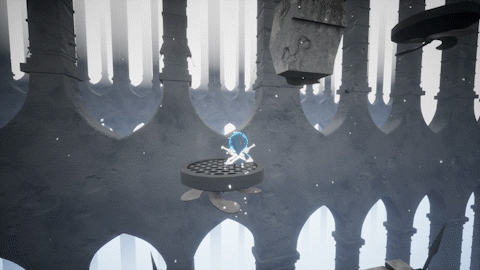  The thing that bothered me the most when I first played Ocarina of Time as a pre-teen was the automatic jumping. It just seemed weird to me that Zelda would make it to the third dimension and not have platforming to it. Maybe part of this was Nintendo trying to keep Zelda and Metroid distinct from each other, but in Blue Fire we can finally see what a Zelda game would look like as a 3D platformer. And it's good! This small team indie project offers an interconnected world (think Souls in terms of unlocking shortcuts and navigating through large rooms), and some really solid movement tech, along with Zelda-style hack & slashing and dungeon progression. There's plenty of secrets and upgrades to find, and the game is full of "Void" stages that are a lot like the FLUDD-less levels from Mario Sunshine. In a nod to a later entry on this list, Skyward Sword, there are also Silent Realm style challenges where you have to hunt down orbs that will test your acrobatic skills. Well worth your time.  Somewhere inbetween a choose-your-own-adventure game and a walking simulator, Road 96 charts the story of a nation on the verge of dictatorship as the youth of the country attempt to hitchhike their way to the border and escape before it all goes to poo poo (well, even further to poo poo). Your success is not guaranteed and it will come down to the choices you make. Win a bunch of money from gambling? You might be able to pay a smuggler to get you across... but only if you don't spend it all on lodging, transportation and food before you get there. You could survive all the way to the border and then gently caress up right at the end. Which honestly, is not that unrealistic. One of my runs ended in me flat out getting shot to death by border police. The stories on the road are quite varied, and you'll run across some interesting characters, such as a hitman running a taxi service, a nerdy genius kid backpacking on his lonesome, or a TV reporter partying like there's no tomorrow. And their stories just might connect together..... as you encounter them in different circumstances as different teens. You might have to defuse a situation where a cop has a gun drawn, or be on the lookout for a stalker, or escape from a killer. The events are randomly chosen and sometimes you're forced into situations where survival and self-preservation come first. Sorry, alive guy in the trunk! Politically I think the game could be a bit harder hitting, as it plays a bit of a backseat to the road trip antics you get into, but I'm aware that edges always have to be sanded off for mainstream appeal. The messages mostly come through okay. Ultimately, if you want a 'choices matter' game where those choices could get you killed, you should give this one a look. You have a slightly higher chance of survival in Road 96 than Long Live the Queen.  Root Letter was a kind of interesting mystery VN that I mostly enjoyed because of the use of live actors in the Steam version. Root Film goes back to the hand-drawn style of the original Letter, and places its mysteries in a movie-making setting where a film director keeps stumbling upon murder mysteries that might be linked together. Where the game really shines is the characters, as the banter between the main character and his sarcastic zoomer assistant is always entertaining. The mysteries are mostly fine and hold up logically, though they wouldn't hold a candle to the complex puzzle boxes of Ace Attorney. Given the rotating cast of somewhat bland characters in Letter, I thought Root Film was a significant improvement, and if the dev could actually get a budget (this game is very economical with the portraits, and the backgrounds are all photoshop filtered photos), their next game could be something really special. --- I hit the character limit! gently caress! Guess this will continue in a future post! Seriously I can't even fit in images for each game! I'll be back later with the rest. The 7th Guest fucked around with this message at 20:54 on Dec 31, 2021 |
|
|
|
Alright, resuming my list, sorry about that: 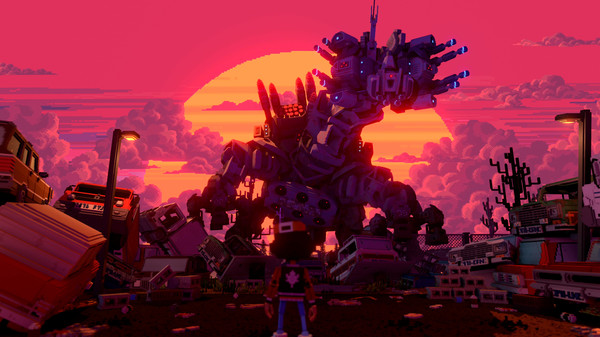 What a weird neat little game. Echo Generation is a shamelessly nostalgia-pandering JRPG with difficult Paper Mario combat and gorgeous voxel art, along with inventory puzzling. I generally do not like a lot of voxel styles in video games because it's often poorly done and just looks strange. But Echo Generation is a game with an actual commitment to their aesthetic and it really pays off visually. With just three party members (one a swappable set of companions) and Paper Mario style level gain decisions, you really need to think carefully about each stat boost. Money is hard to come by early on, and you will probably get your rear end handed to you in the first couple of hours. But once you're over the initial hump, this game really starts to breeze. The most annoying aspect of the game is by far respawning, as you are basically forced to run back to a bed to regain your health and there is no warping to be found here, but hopefully they will address this in a future update.  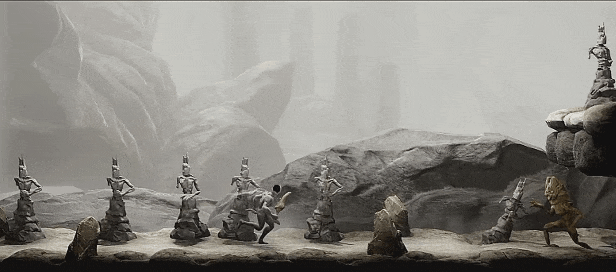 The Soulsiest game on my list, Grime puts forth a very unique vision, not clinging just to the old standbys of Lovecraft or Giger, but instead doing its own weird thing, a rock-filled world of carved and uncarved, of mishapen stone creatures that are really obsessed with anatomical perfection. You are something inbetween, a Carven crafted out of broken rock with a black hole for a head, and... that's pretty much all you get for a while as you roam an interconnected world and crush your prey. There's some interesting things at play here; a very player-friendly parry system that does major damage to enemies and also grants you perks to acquire when you've absorbed enough of the same enemy type. This can range from simple perks like being able to walk slower, to regaining stamina on successful absorbs, to increasing your stats by significant percentages. Of course there is still the traditional Souls levelling up mechanics, and Grime keeps it simple with 5 stats: Health, Force (stamina), Strength, Dexterity, and Resonance. There are of course weapons that require certain STR and/or DEX levels... there's shards to take to a blacksmith to upgrade your weapons.. I mean it's a Soulslike. The bosses are also a neat treat, as they're just as strange and weird as the world itself, from a fleshy abomination hiding in a statue and using cracked statue pieces to block your attacks, to a pair of mothers with mouths on their chests damaging you with singing. It's far from perfect but I love a game that goes for it and has its own footprint.  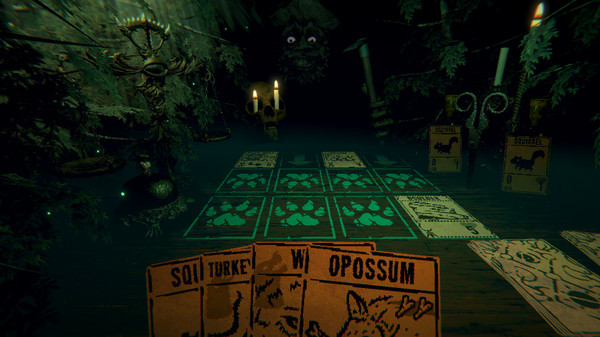 Daniel Mullins likes to examine the game<->player relationship with his stories, and Inscryption is another game that examines this relationship, albeit differently from his past titles. No, you will not suddenly be in a 3D platformer and then a fighting game and then an SRPG and then tax software. This game stays primarily a card game from start to finish. I think it's important to spoil that because there's a lot of "DON'T SPOIL YOURSELF GOING IN" and I think that if people assume this is going to be just like The Hex or Pony Island, they'll be disappointed. Each of the three acts of the game are card battling games, that are mostly based on the same rules. The difference is in their presentation and their structure. One act presents itself like a roguelite, while another presents itself like a dungeon crawler, while another presents itself like a gameboy CCG. My personal favorite act is Act 2, as the CCG allows for some major deck customization and is a lot friendlier to failure, giving you more time to really feel out the nuances of the game. But of course most people's favorite act will be the ominous and creepy Act 1, that combines a dread-filled roguelite feel with occasional Escape Room puzzling. No matter what, this is a game that even non-cardheads can get into (and I'm NOT a card game fan in general), and even if you don't like the game's every twist, you can't deny that it's immersive and unique and really going for it.   Brought to you by the creator of Dusk (and others) is the Dread X anthology series, which runs under a simple premise: "make the PT of your dreams". Not literally PT, but the PT ideal for whatever concept the develoepr has. The first anthology, for example, includes a cursed Tiger LCD game by the dev of FAITH. Each anthology could be easily compared to the Haunted PS1 Demo Disc collections, but with stories that are fully complete. So the games are short, but finished. This year's anthology is themed around first person shooters, and comes with a framing device that is itself a first person adventure at a remote Antartic base. Finishing the framing device game involves playing through the different games and getting codes to input into a safe. The games themselves are tributes to games like Fatal Frame, hunting games, Realms of the Haunting, and one game where you have to realistically reload every bullet into your gun before you can fire it. Not every game is a success, but they're all INTERESTING, and wildly different, and very creative. I'm definitely a fan of this anthology series and I'm curious to see what the theme will be in 2022.  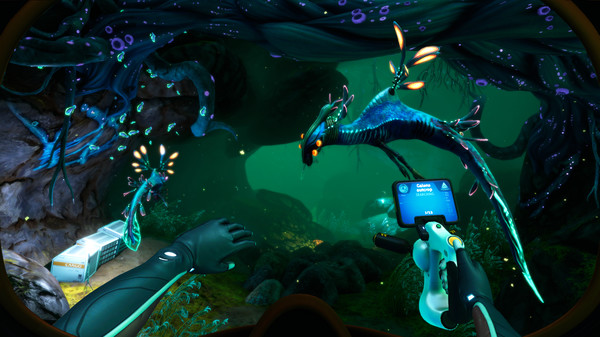 The original Subnautica ruled and was one of my favorite games of the 2010s. The sequel, offering much of the same, is still entertaining, though it loses some of what made the original special. It's not the newly added on-foot sections, which I actually liked and thought broke things up nicely. It's the path of progression itself, as the world map is nowhere near as well designed as the original and involves a lot of going back and forth and, honestly, nothing particularly flows well together. That said, even with the novelty having faded, it's still Subnautica, with that familiar and addictive gameplay loop of expanding your swim radius, building a base, upgrading your equipment, building vehicles, scanning fish and plants and going deeper and deeper-- even if it's in a less logical fashion.  :format(webp):no_upscale()/cdn.vox-cdn.com/uploads/chorus_asset/file/22787961/Axiom_Verge_2_pc_epic_games_store.jpg) It takes some real guts to completely gut and rebuild an IP in its second game, which is what Axiom Verge 2 does, and it will no doubt polarize fans. Gone are the guns entirely, replaced with a pickaxe and boomerang. An entirely new cast and setting in Antartica and the Mesopotamian world on the other side. Bosses being changed to largely optional ala Breath of the Wild (and also easier than the original's extremely frustrating bosses). But it really does pay off. Although I'm not the biggest fan of the art quality (and the music is a mixed bag-- the real world music great, the chiptune kinda bland), I'm a fan of everything else going on here. A lot of freedom in exploration even for a game with ability gating, a ton of upgrades to collect, and a Metroidvania-within-a-Metroidvania where you play as a robot beetle which has its own ability upgrades like a grapple hook to whip yourself up ledge edges. There are some minor skill trees but you can still find health and weapon upgrades in the world instead. Plenty of lore to find, and at least half of the map is completely optional to search (including an ability that lets you fast travel to any save point). It felt like the first Axiom Verge was mostly coasting on the fun of its guns, but Axiom Verge 2 shows Thomas Happ's growth as a game designer.  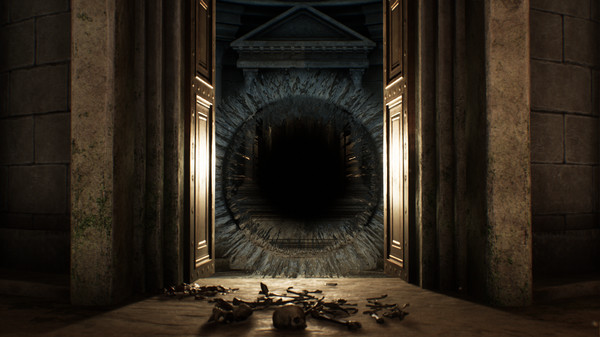 I don't know if the time loop craze is partially the result of our feeling trapped in a neverending societal loop of bad vibes and tough news, or if it's a general response to the universal feeling of wanting to break out of a rut... certainly the pandemic has made this genre even more interesting in terms of how we relate to it. But unfortunately, there have actually not been a lot of amazing time loop games to come out of this fad. Most notably the failure of 12 Minutes. Of the time loop games to release in 2021, though, The Forgotten City is by far the most successful -- perhaps having an initial Skyrim mod to build from helped. Navigating a cursed city doomed to extinction, your goal is to break the loop and save as many people as you can (or at least, yourself). There are people working against you though, and getting everyone on your side will involve a lot of personal quests to resolve. This is done through simple exploration and investigation, a little bit of trial and error, and eventually delegating tasks as you try to run the perfect day and pull everything off. Since the city is not too large and the time limit is generous, you can really perfect your routing in a way that is far more satisfying than the frustrating order-of-instructions 12 Minutes makes you follow. Definitely recommended for people who enjoy this trend in game design.   A speedrunner's delight, Unsighted is all about routing and efficiency. Well, it's also a cross between Zelda and Hyper Light Drifter, with interesting dungeon ideas outside the norm (for example, an abandoned highway dungeon with a lot of rail grinding). But you're up against the clock, as the life force keeping all automatons conscious and self-aware is slowly draining, with their energy source walled off by the remaining humans in a war-torn city. If their energy runs out, they become "unsighted", feral robot creatures that do nothing but attack on sight. This means having to make some tough decisions. You will find Meteor Dust in chests, which allow you to extend the life of an automaton by 24 hours, but who do you give them to? Can you find enough to keep everyone alive as you progress through the game, collecting the 5 Meteor Shards necessary to unlock the final dungeon? If not, who do you sacrifice. For those that are not so good at speeding around the world, there's the option to turn the timer off, but there's also an NPC who will sacrifice an NPC and give their time to you. Do that if you're a monster I guess! The NPCs also have a companionship level that rises with the meteor dust you give them, which can result in perks such as discounts, and a reward for maxing their level out. Your fairybot companion will fight alongside you, for example. Or you can gain the ability to equip chips anywhere instead of just at terminals (these chips can enhance your stats, or abilities). How does it actually play, though? It's pretty good! It took an hour to get used to the combat, which is very heavy on parrying enemies and likes to throw several enemies at you at once. You will need to play pretty defensively in the early going until you get powerful enough to really wreck people's poo poo. The Zelda tools you get are fun, like the Spinner which lets you zoom around on a giant top, or the always-necessary hookshot. It'd be inaccurate to call this a Metroidvania as it's definitely more a tool-upgrade Zelda game, but you can definitely 'sequence break' of a sort, as there are alternate ways to get into dungeons, such as getting into one dungeon via a room from a different dungeon. And for those who intend on playing more than once, you'll definitely come up with some ideas on how you can change your route through the game completely.  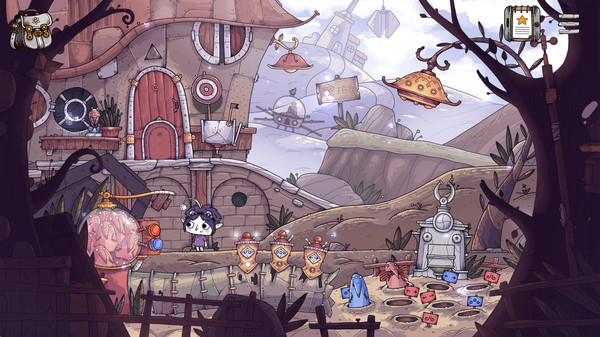 For those who enjoy games like Machinarium, here's Tohu, a game about a kid that has to restore the engine that powers the many islands and maintains balance, from a shrouded individual running around breaking and stealing things. Being an adventure game, of course, you'll ALSO be breaking and stealing things, but it's fine because you're the protagonist. You also have the ability to transform to a rock elemental that has the strength to pick up and move heavy objects. The game is very charming and despite using cut-out animation is still very lively and fun to look at. Much like Anamita Design games, there's lots to click on just for fun, and each island presents a different puzzle theme and has something new and interesting to offer. Though this game is definitely for a younger set, it should be enjoyable for all ages.  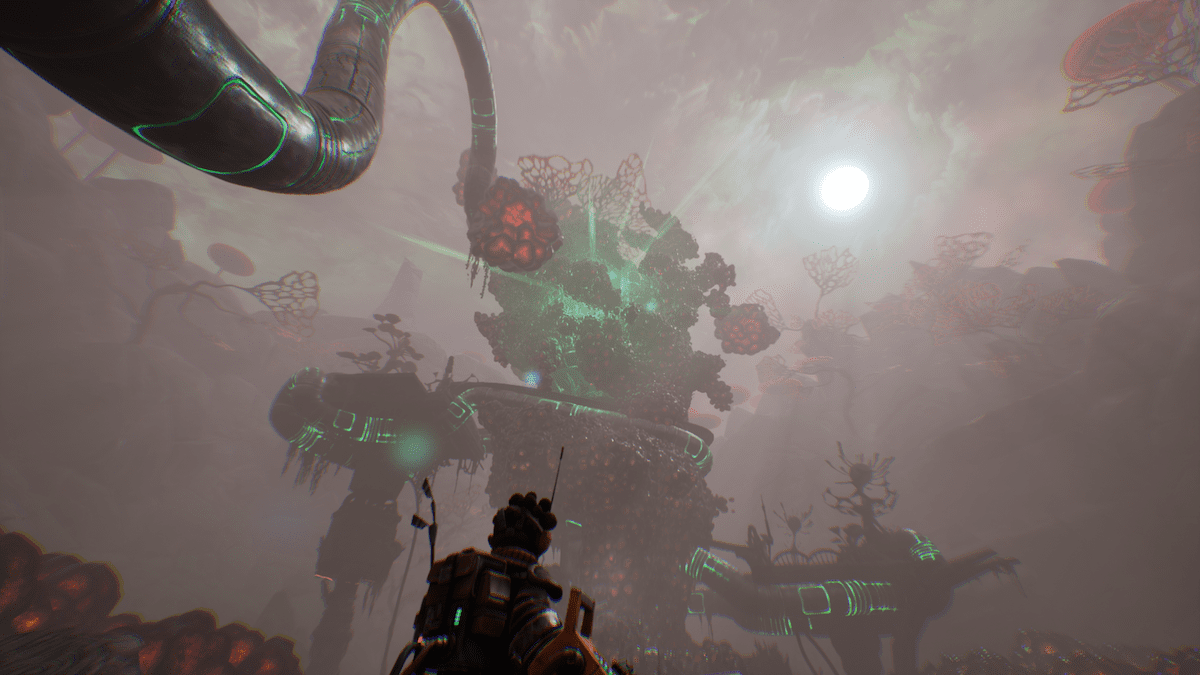 Released in mid-December, Image & Form took what they learned from the Steamworld series and ventures into the third dimension. Though a new IP, The Gunk is not entirely unfamiliar. There's a loop of exploring further, gathering resources, and returning to camp to upgrade. But it's far less about becoming more powerful and more about improving your efficiency. In some ways it reminds me of Journey to the Savage Planet, only this game isn't helmed by a copyright-bootlicking weirdo. There's a nasty goo sucking all the life out of this planet you've landed on, and your glove turns out to have a very powerful vacuum for sucking it up (where the gunk goes, who knows). If you enjoyed cleaning things up in Mario Sunshine, you've got your work cut out here. As Gunk pockets get cleaned up, life and vibrancy is restored to the area, as plant life sprouts and often assists in your platforming. The game is short, as it feels more like a test run at 3D before the Steamworld Dig franchise makes its transition, so you can play it on Gamepass in one evening if you prefer. A solid lateral step for this dev and I bet SD3 will benefit greatly from their experience on this title.  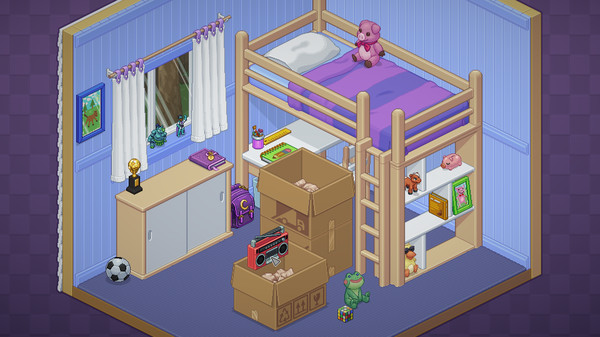 Environmental storytelling: the game?? Over a series of several levels spread across different points in a person's life, you unpack all of their belongings and put everything in its proper place. By the developer of Assault Android Cactus comes something completely different and far more relaxing, a click and drag casual puzzle game with cute pixel backgrounds. But still emotional! This is basically one long showing and not telling, the details of the person's life made clear by where things go, where things can't go (that boyfriend is an rear end in a top hat!), what they keep with them as they get older.  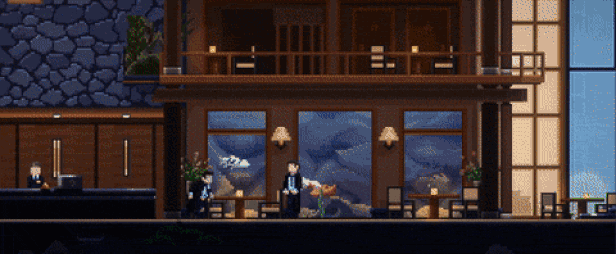 If you're a fan of detective games that hold you to your decision (like Sherlock Holmes: Crimes & Punishment), Lacuna places that in a cyberpunk setting and has you attempting to thwart a possible terrorist plot to incite interplanetary war. There is no savescumming in the game and your decisions will have an impact, as wrong accusations will make it more difficult to get clues that would help you in future deductions. That's no joke either, I had started 4 for 4, and then messing up on deduction 5 started a spiraling effect where my decisions became more and more guesswork, leading me away from the best ending. You'll make your deductions by finding clues, checking email and news archives and doing the logical work yourself. It really got my mental gears going and I often felt pretty strongly about my choices even when I was wrong (this sometimes led to a bit of confusion when I felt my logic was a little stronger than the game's, at least in the last couple of hours). In the absence of a conventional Sherlock Holmes game (Frogwares can gently caress off with their open world combat nonsense), Lacuna is a fine substitute, with plenty of intrigue and noir-tinged narration.  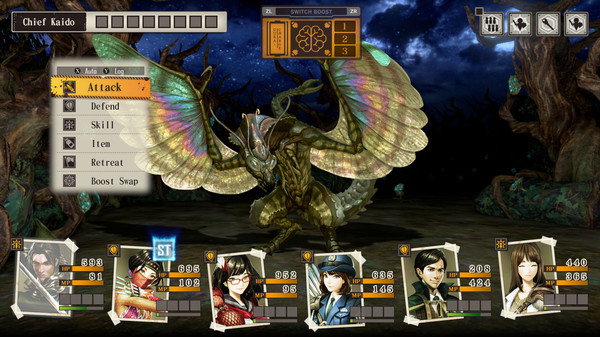 With Etrian Odyssey's fate as a franchise unknown, it's up to other developers to take the baton as the Wizardry successor, and Experience has slowly been building their skills from game to game, starting from Savior of Sapphire Wings, evolving with Stranger of Sword City, doing the unconventional and macabre VN-RPG Death Mark. Undernauts draws on all their, well, experience, up to this point to deliver their best dungeon crawler yet. Mixing fleshy horror with conventional Wizardry battling and roster building, you create a team of spelunkers trapped in the world of Yomi, exploring the mines, castles, and forests that populate it, in search of the relics needed to power the portal that will return you home. The monster designs are delightfully gross and nasty, and the game doesn't pull any punches, promising easy TPKs even on regular encounters if you aren't prepared. The classes offered are fun (though their abilities are a bit limited even after subclassing), and the game is full of amenities to make your dungeon life less of a hassle. Easy return to camp, turbo mode for battling (and I do mean turbo, it's crazy fast), remembering past combat inputs, no-fuss anytime respec of your characters' stat points and ability points (allowing you to modify them for the particular challenges you're facing), and much more. Did I mention you have three free supercharges at the start of every battle that only take a turn to recharge? These let you use abilities without consuming MP, or take less damage, or go first before the enemies do. In short, this is a micromanager's dream, and the difficulty combined with the supercharges makes for really fun strategizing. I do wish there was more enemy variety, as the game kind of feels like a Vita project that just got moved over to the Switch, and I also wish I could draw the map myself, but this is still an excellent JRPG for Etrian/Wizardry fans that like some bite and a little horror.   I have a not-so-secret affinity for hidden object style games... but as time has gone on, the publishers & developers making the HOGs have slowly gotten better and better to the point that it's evolved into a new subgenre of lite adventure game that melds light inventory puzzling with puzzle minigames. I don't really know what to call this subgenre, but if you've played any recent Artifex Mundi or Alawar adventure game, you know what I'm referring to. Behind the Frame stands out as a short, but premiere title in this field. As a young painter, you go about your day, prepping breakfast, putting some music on, and painting your debut work for an art exhibition you're attempting to arrange. Across the street from you is an old man and his cat, and things are just cozy... although not quite right. No, this isn't a secret horror game, but there is a small mystery to unveil. And you'll do it by doing, exactly what I said above; doing some light inventory puzzling and puzzle minigames. The high budget and production values are what really make this shine. The game has gorgeous art that reminds me of French anime productions like Miraculous or Totally Spies, but uh... much more normal. The jazz music is calm and soothing, and the game will only run you about 90 minutes in length, a breezy afternoon game to play on a lazy Sunday.  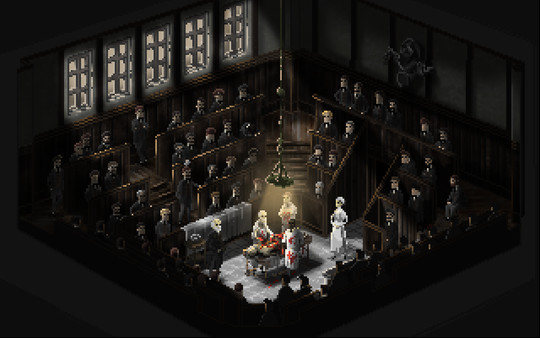 An astonishing achievement for an Adventure Game Studio project developed by just two people (and free!). Similar in vein to the game adaptation of I Have No Mouth and I Must Scream, travelers aboard a mysterious train recollect their final days, and the horrible things they did (under horrible circumstances). The backgrounds are gorgeous for a game being rendered at 320x200, and each story is just a little bit different in their execution, covering a broad range of heavy subjects like homophobia, racism, dementia, and survivor's guilt. It may be a little heavy handed at times (though nowhere near as heavy handed as the actual No Mouth Must Scream adventure game) but it only runs you about 90 minutes of playtime and 0 dollars. It's basically an indie film in pixel form with some light but contextually relevant puzzling.  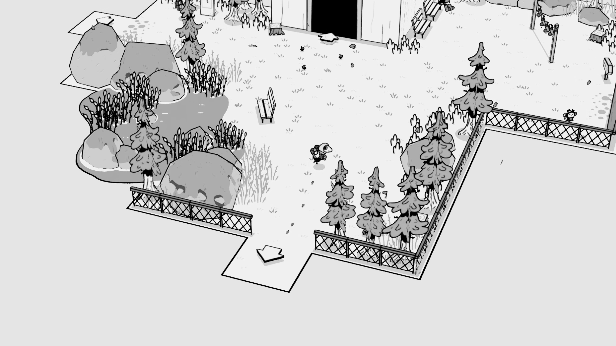 The past 2 years has seen a resurgence in photography-based games, from Umurangi Generation to Alekon to the return of Pokemon Snap. But standing above all of them is the unassuming monochrome joy that is TOEM. Similar to A Short Hike, it's all about the journey, as you go from town to town, filling out your stampbook by fulfilling people's requests. This is, of course, done with photography, whether it's finding the perfect picture of a hotel to hang up in their lobby, finding a sneaky criminal, or joining a scout troupe. Perhaps you might meet the Loch Ness Monster? There are plenty of different requests to do in each town, far more than the required number needed to advance. This is not a game to bee-line, but to just take your time, explore around, and have fun. It's probably the most chill game I've played all year, and a "wholesome" game that is also just a good-rear end game.  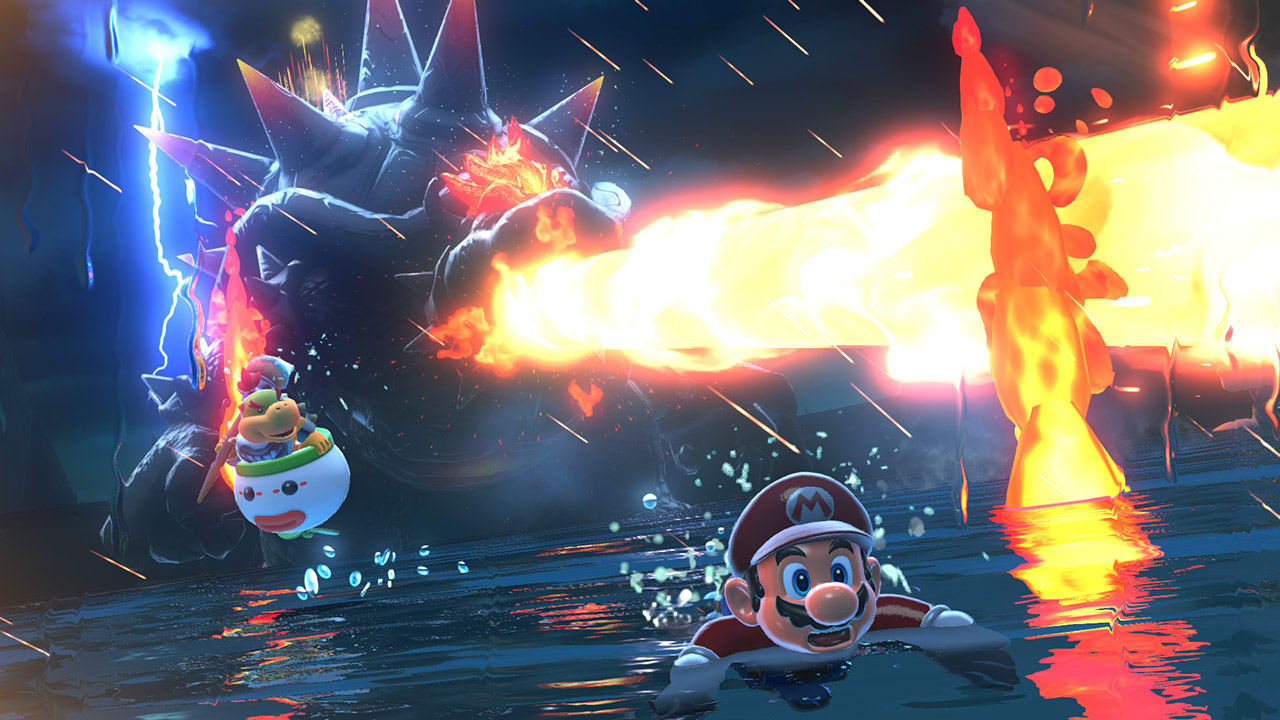 Mario 3D World is one of my favorite 3D Mario games, a send off to Nintendo's obstacle course design theory as the company would transition to open world gaming with the Switch (and though Odyssey is not a fully open-world game, its levels are definitely more open sandboxes than abstract routes in the void). From start to finish, the game is brimming with wonderful ideas and gimmicks, nodding to every game that came before it. The double cherry and cat bell are awesome powerups that deserve to return. But we're not talking about that today. We're talking about the 2021 release Bowser's Fury, which came with Mario 3D World. And it's... odd. It's really odd. Here you have an attempt to bridge the gap between 3D World and Odyssey, by having a singular open world populated by discrete levels, each with 5 shine stars to collect, as well as many other stars to collect from exploring. This is, to me, a strange experiment that yields none of the strengths of either approach. The open world feels a bit empty, and the levels themselves are all too easy and lack the traditional difficulty curve I come to expect from a Mario game. Every level essentially feels like a World 1 level. It's also got the least congruent visual continuity of any 3D Mario game.. nothing quite feels like it belongs in the same world, it's really strange. Why does it place so highly then? Because, besides being paired with one of the best Mario games of all time, it's still an entertaining Mario game. Mario's moveset is still great, it's fun to see the cat powerup back, and I really like the powerup 'bank' introduced in this game. It is always frustrating to get a powerup and then immediately lose it, so to have reserves is extremely helpful. And there are a couple of levels that are downright fascinating. To give one example, while 3D World had a level that mixed real platforms with ghost platforms, Bowser's Fury has a level that is ONLY ghost platforms, requiring careful observation. I do miss the old style of star-based objectives on display here as well, as I've always enjoyed coming back to a level to see a new route or the platforming remixed. Ultimately, though, I'd like to see Nintendo stick to the Odyssey formula and keep refining that. An interesting experiment, but let's put that blueprint back in the drawer. I know I am an outlier opinion on that, but I am hoping for something stronger on the next outing.  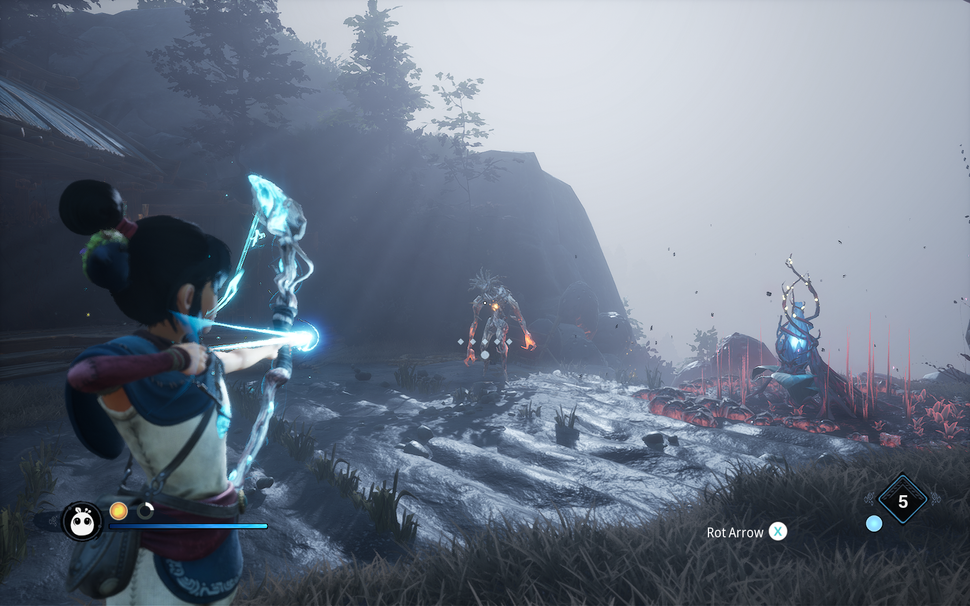 The first thing anyone will mention about Kena is that it is more difficult than it appears at first glance, with combat being punishing and requiring the full use of your toolkit to survive. The second thing is the gorgeous art. What surprised me, though, was the game's atrocious input lag on PS4, which felt like it was around 250ms. This ultimately gave the game a bad first impression as my jumps were very delayed. If you can get used to it (it feels like you're streaming the game over a cloud service, honestly), there's a very cool game here. Some have compared the game's mix of platforming and melee combat to Kya: Dark Lineage, but I'd say the game also shares some things in common with the 3D Prince of Persia series: Tricky combat, large landscapes to traverse, and a lot of wall climbing and ledge hanging. The game's equivalent of Stars are the Rot, a bunch of little shrub minions that are hidden around the world and help you move large objects as well as amplify your attacks. When I mentioned the full toolkit earlier, I meant it, as several bosses are very difficult to defeat without unlocking and using Rot Attacks. These bosses feel very Souls inspired with large damage punishment to the player for mistakes, multiple phases, and limited healing. Would I say the whole game is like that? No. In fact, I think the general combat can sometimes get a bit too repetitive, but luckily there's enough other activities in the game that it keeps from being tedious. Plus, as I mentioned with The Gunk, I'm always a fan of ruined areas becoming restored and colorful again. Let's do it some more in 2022, game devs!  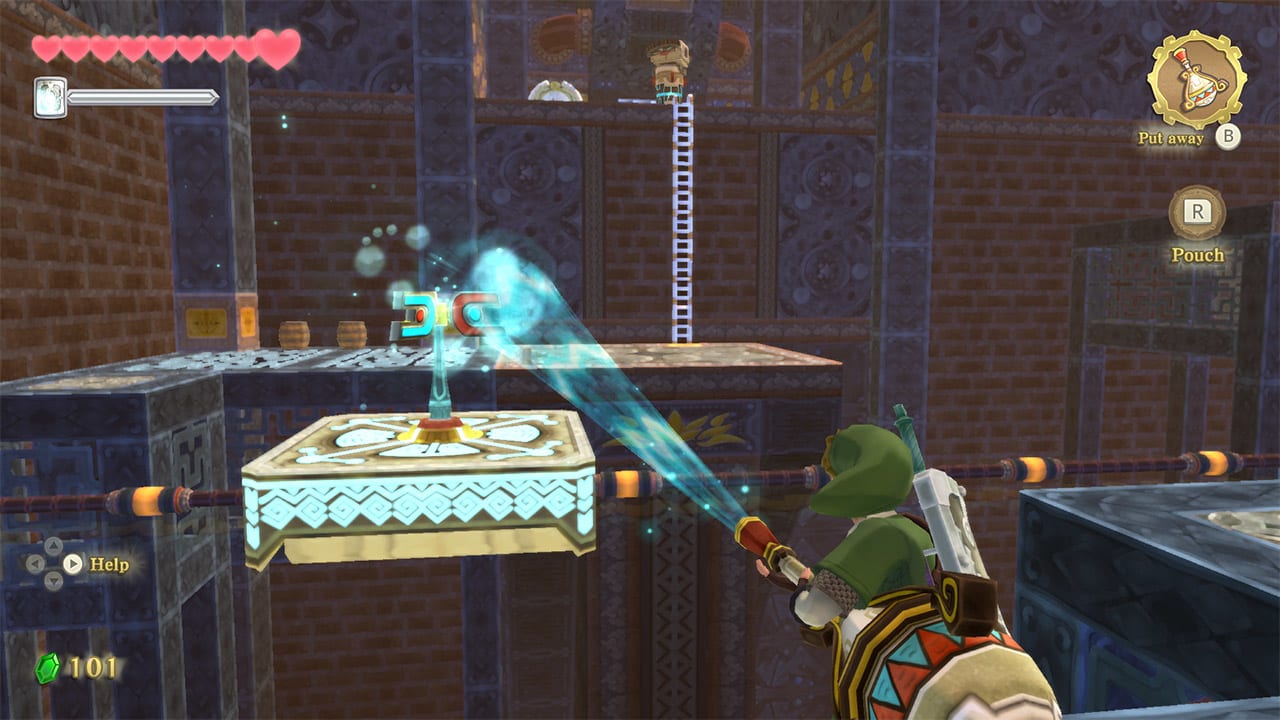 The worst non-CDi Zelda EVER.... says the internet. Well, either the Switch version completely redesigned the game, or the truth is somewhere inbetween the Zelda fan ranting and the critical praise of the game. Where I land on it? Dang this is a good game! The thing I had to understand going in was that this isn't an Exploration Zelda. This is a Dungeon Zelda. So much so that even the areas below the clouds are dungeons in and of themselves. It's a game full of everything I enjoy about Zelda EXCEPT the surprise of discovery -- which is, of course, addressed by Breath of the Wild, but not in a satisfying way for myself. If you shed that expectation, there's a lot to love about Skyward Sword. First, the elephant in the room. Skyward Sword moves the clumsy sword swinging from inaccurate wiggling of the Wiimote to the much more precise right analog stick, and, having not played the original, I got into the groove really quickly beyond the opening hour. Simply flick in a direction to swing, or go from one side to another for a stronger attack. Unlike other Zelda games, enemies have extremely short i-frames, which means you can swing as fast as you want and they will go down quickly. In a year where Ys forgot the fun of wailing super fast on enemies, at least one game let me rapid fire doofuses with a sword. In design and aesthetic, Skyward Sword feels like if Zelda was a PS2 franchise. Again, nothing wrong with that, it's just another instance of a Zelda game trying something different. But the world size is definitely smaller than Wind Waker, and Skyworld feels at times redundant or could have been a bit more populated. It stands somewhat at odds with the rest of the game's tightened focus. The loop is just flat out different from any other Zelda game. This is one where you're coming back to the hub town of Skyloft repeatedly to brew potions, upgrade your gear and wallet, and seek out Goddess Chests, Skyworld chests that you activate on the surface world. What overcomes these oddities (and, to be honest, Skyloft was perfectly fine, I just wish Skyworld itself had more going on), is that the dungeon design and surface world are as good as 3D Zelda dungeons get. THERE'S A WATER DUNGEON THAT DOESN'T SUCK!!! A volcanic temple where you roll around on boulders. A time-traveling desert and sandsea where you infiltrate a pirate ship. The Wii era really was near the apex of Nintendo's linear design brilliance (I mean the Galaxy games, c'mon). It's not that this deserved the very high scores every critic gave it (there is repetition in going back to the four regions three times, although you either go to new areas/dungeons or the areas are remixed), it's just that Zelda fans need to chill with the hyperbole. Skyward Sword's not only perfectly fine, I think it's imperfectly GOOD.  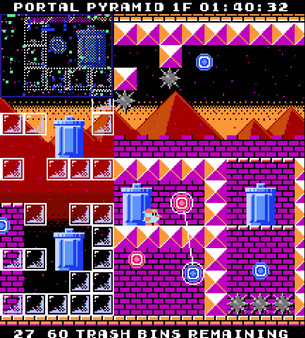 This is definitely the most obscure game I've got in my list, and it's also very short, and very cheap. But it's cool! Modelled after the old 80s arcade 'collect-em-all' style of game, Binky has you traversing 10 very different and very unique open maps, grabbing trash from every bin before returning to the entrance. One stage might be a swanky hotel, another is a recreation of Windows 3.1 with mouse cursors that click and drag your character around. Your moveset is very spritely and acrobatic, and it's just really fun to jump and bounce around stages as you go from floor to floor and find each bin. But that's it, that's all you get. It's all you need, really. It's short, it's fun, it throws a lot of fun visual concepts at you, it's just a good time.   Of all the publishers in 2021, Humble Games has by far had the best year. They released 8 games, several of which have been highly acclaimed. Unsighted, The Wild at Heart, Unpacking, even Project Wingman if you count Dec 2020. There are games I didn't even get to that people speak highly of, like the in-progress Prodeus. Flynn lives up to that high standard, as a beautiful 16-bit action platformer with a powerful dog friend, uptempo combat and great level design. Like taking Super Mario World and adding a lot of melee to it, whether it's tried and true sword slicing, slow and powerful axe swings, or fast and furious claw swiping. Add elemental attacks, limited healing, a skill tree, and SMW-style keys that you can unlock secret exits with, and there's a lot to enjoy here. The game could definitely be more punishing, which deflates some of the strategy of the healing, but I highly enjoyed this one.  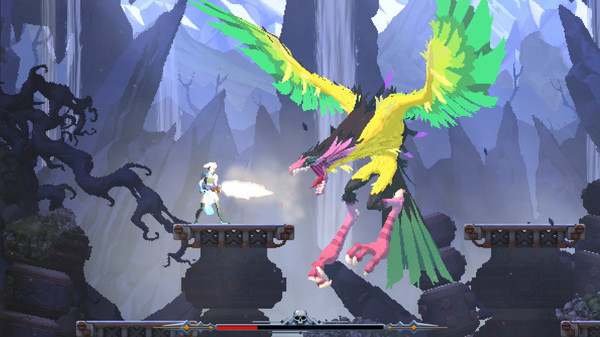 Last year I put Moon on my list because it was a 2020 release on Switch even though it was actually a PS1 game originally (and never localized in the west). Foregone came out of Epic Jail this year, and if I'm being honest, I'm not sure anyone even noticed. Neither that it debuted on Epic, or that it launched on Steam and exists at all. Which is a shame because I think this game is really fuckin' fun! A group of scientists did a bit of 'what has science done' to try and turn the tides of a war, creating a bunch of experimental monsters that ended up destroying their kingdom, woops! You're one of those scientists sent in to put an end to it, and you have a personal connection as well (the final boss cutscene voice acting is... it's incredible in a bad way, I loved it). This means slicing, dicing, and shooting your way through a bunch of dungeon labyrinths. The game's art style is slick, and renders 3D characters at low resolutions to make them look like very fluid sprites (a similar technique used in Dead Cells and Ghost Trick). But unlike Dead Cells, this is a completely linear and hand-crafted game, so you can dropkick that comparison off the bridge. While I wasn't a fan of the loot quality (8% more damage and +12% status effect duration wow who cares), the general loop of going back to the hub and upgrading your skills and buffing gear works very well to break up the gameplay, and there are side challenges you can take by activating beacons around the world. The action itself is smooth and peppy, with different weapons having different weights and strengths. One fun weapon is the gunchucks, which fires shotgun blasts in addition to bopping enemies. Combine Overdrive with the daggers and Haste and you're basically an unstoppable tornado of destruction, as gems fly everywher--- waaaait a minute. Is this a stealth Ys game?? No, no it's not, the gems are just money and skill points, but it can be very fast if you want it to. And the bosses are giant and fun encounters, reminding me of the bosses from Iga's GBA Castlevania games, making full use of the arena space and forcing you to keep on the move.   This year has been full of surprises, and none were a bigger surprise for me than Recompile, a Metroidvania 3D platformer set inside a computer where you are a rogue bit of code infiltrating an AI originally designed to protect humanity, in order to repair and reboot it, and possibly save the human race (or doom it). What delighted me the most about Recompile was its unflinchingly challenging platforming, something that turned a lot of people off, but really played to my tastes. There are a lot of tricky jumps in this, even as you acquire more movement abilities. This culiminates in an absolutely enormous platforming challenge to acquire the flight ability, and when you get it, boy howdy do you feel like you earned it. The game also mixes in some melee and ranged combat, and although it's not great, it varies things up enough to keep things interesting. The guns are adequately punchy, and switching between platforming and shooting is seamless. Despite the minimalist aesthetic, each biome manages to evoke moody and oppressive atmospheres, and there are data logs to find that reveal the last days of the people who once worked in the facility that houses the computer you're in, and what its purpose was. ---- I can't believe this but I ran out of characters AGAIN lmao. Alright, my top 10 will close it out. I'm going to get groceries and then I'll finish this off! The 7th Guest fucked around with this message at 21:34 on Dec 31, 2021 |
|
|
|
Alright, finally, my top 10:  My favorite puzzle game this year comes from the creator of Push Pipe Paradise and is thematically the antithesis to my backlog coverage: just letting your excess go. You've come to the mountains to burn all of your things (and presumably the epilogue will have you live with Bill Watterson somewhere in the woods, drawing and burning comics that no one will ever read). The control scheme is a bit awkward but is part of the puzzle. You walk around the open world, then enter a level, where you have to get your box of stuff to the pyre. You can rotate in place and that's what you'll have to get used to, as you pick up the box (or other objects), and try to get it to point B. You'll find the most efficient/successful movement involves backing up with the box, because it very much gets in the way (part of the puzzle design). As you solve puzzles, crates will appear in the open world allowing you to progress further in the world, as well as reach hidden areas with bonus puzzles. As you may have recalled with my Monster's Expedition blurb in my previous post, exploring a world full of puzzles is my jam, and the quality of puzzles on offer here is very good, slowly ramping up in difficulty and introducing more mechanics, some of which aren't even new mechanics so much as teaching you movement tricks you most likely weren't aware of by presenting you a new type of challenge and letting you figure it out yourself. Kind of like the game Catherine in that respect. If you've enjoyed Draknek's games in the past, this is right up there with their very best.    What's a grape to do when his entire community is broken apart and isolated, as a rot threatens to drain the life out of the entire world? Well, they're to build those bridges back up, of course. Garden Story is a lite-ARPG take on the life sim, where your goal is to rebuild a fractured community by doing daily tasks, fixing infrastructure, helping villagers with their problems, and going into dungeons to fight off the Rot. Each village is based on a different season, and has its own unique problems-- one beach-side town has its town split in two, while a winter village's leader has gone missing in the forest. You'll collect various tools over time for farming, fishing, fighting, and puzzle solving. And of course, there's a little bit of collecting and crafting too. The gameplay loop was extremely addictive for me. Most games with day/night cycles rub me the wrong way, but this game's format kept making me play one more day, as everything you do feeds into other systems. The different categories of tasks can be levelled up, which upgrades the community in different ways, such as offering better tools in shops, or perhaps characters asking for favors. The dungeons are short and don't overstay their welcome, as you progress through them in a lite-procgen fashion until you fight a boss... but even doing that doesn't end your time in that town. You can make any of the towns your hometown whenever you want, and keep building their community levels up if you don't want to progress the story right away. Despite the cute art, there's a bit of despondence to the story, as things never stay fixed, and the rot continues to devastate the world. I thought this game was an exceptional effort for one person (though as you'll soon see, it's not the only solo effort on the list!), and unfortunately it has gotten a bit overlooked after an initially successful demo period in the Steam demo festival (and an appearance at E3). I hope Garden Story will eventually get the visibility it deserves-- and I also hope the dev continues to update the game with more task types, more shops, and more events.    Nifflas has been a figure in indie gaming for a long time, dating all the way back to Within a Deep Forest. Released somewhat unceremoniously on to Steam with a very humble price tag, Ynglet may be his best work since Knytt Stories. Featuring a soothing and reactive soundtrack and hypnotic pattern visuals, the game is billed as an "anti-platformer", where you don't do any traditional jumping, but instead launch from bubble to bubble, aiming your arcs, bouncing off of pads, and riding the occasional train. The game almost takes on a topographical feel as you enter levels named after things like shopping malls and arenas, and surf through the air like you're doing some sort of cosmic ballet. It's maybe the least like any other Nifflas game, but it's still undeniably a Nifflas game. It won't ding your wallet much and it only runs just past an hour, but it's absolutely a worthwhile experience if you enjoy platformers and m o o d.   I love a good sports RPG, whether it's Mario Tennis GBC, or Golf Story on the Switch. Dodgeball Academia takes a fun-as-hell uptempo dodgeball combat system and places it into a Pokemon-style world brimming with Saturday morning cartoon energy and Cartoon Network-style character designs. Your character maybe sort of snuck into the academy and will try to make it to the top with the power of friendship and pluckiness, as you assemble a party of real goofballs, each with their own special abilities. This is a sports RPG, so there is experience, there's gear, there's getting stopped in your path by a Of all the games on this list, I think Dodgeball Academia is the most pure fun title and I'm really happy I played it.  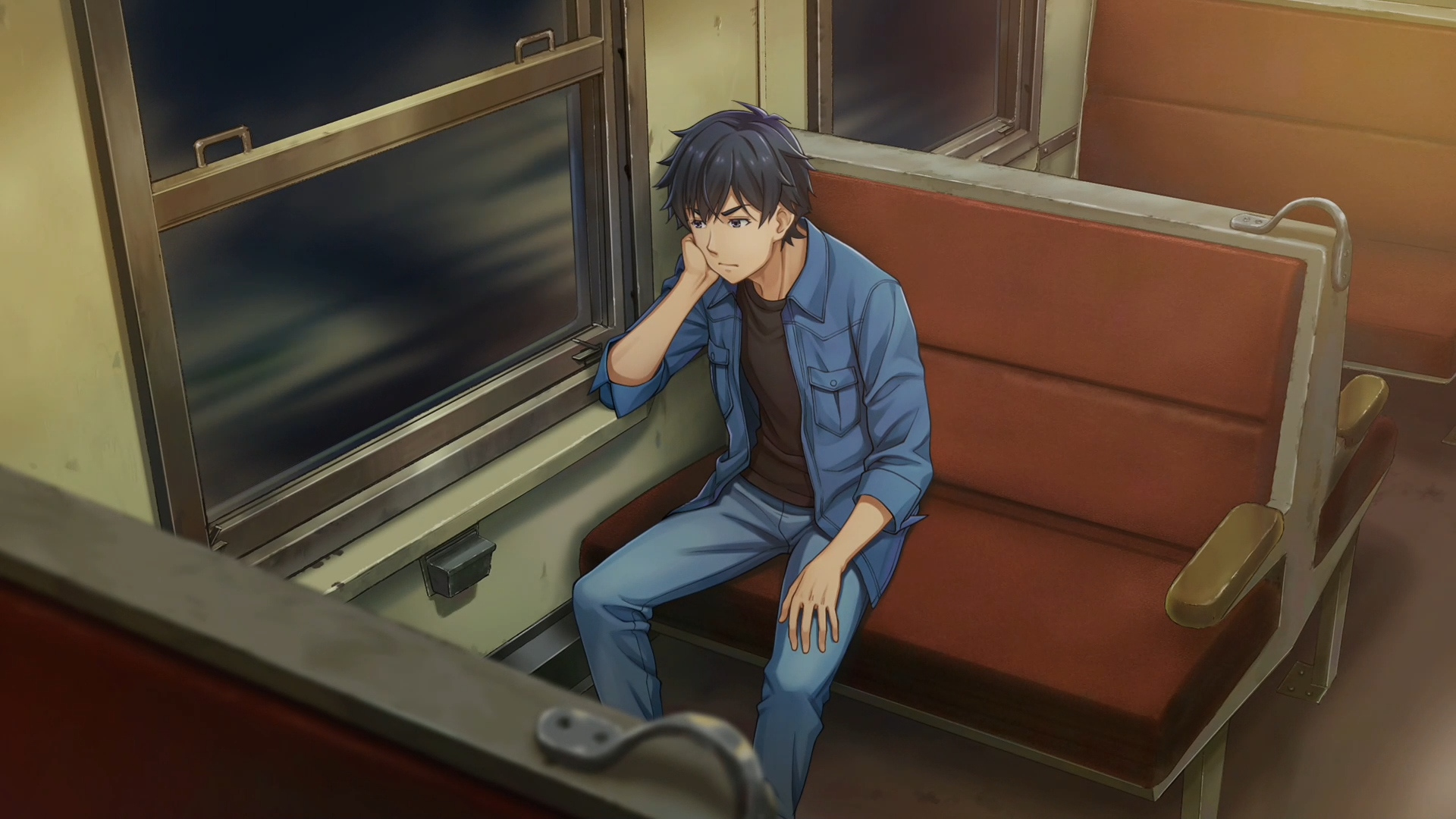 While I would have loved to have gotten to Great Ace Attorney this year (being a huge AA fan), there's actually a much more culturally significant VN to praise this year, and it comes from the Nintendo vault. Having never been released in America in 30+ years, Famicom Detective Club was not only invaluable to the adventure gaming genre in its time, but it's still a fascinating mystery series today. And what a remake! MAGES Ltd is known more for the Adventure Science series (Steins;gate, etc), but here they were given a blank check to produce their most visually outstanding novel to date, with flowing beautiful Live2D animations for every character, well painted backgrounds (this isn't always a given; see Root Film) and sometimes even some full character animation incorporated in-engine, while still preserving that authentic ICOM-style menu interface that gives the series its old-school charm. I fully understand that the game is frustrating to progress at times, in the same way Ace Attorney's investigative phases are-- sometimes you can't progress until you've talked to a specific character in a specific location about a specific topic, possibly even more than once-- but there's just something undeniably charming about unraveling these mysteries, whether it's the identity of the protagonist, the urban legends at the school, or the tricks involved in the murders.  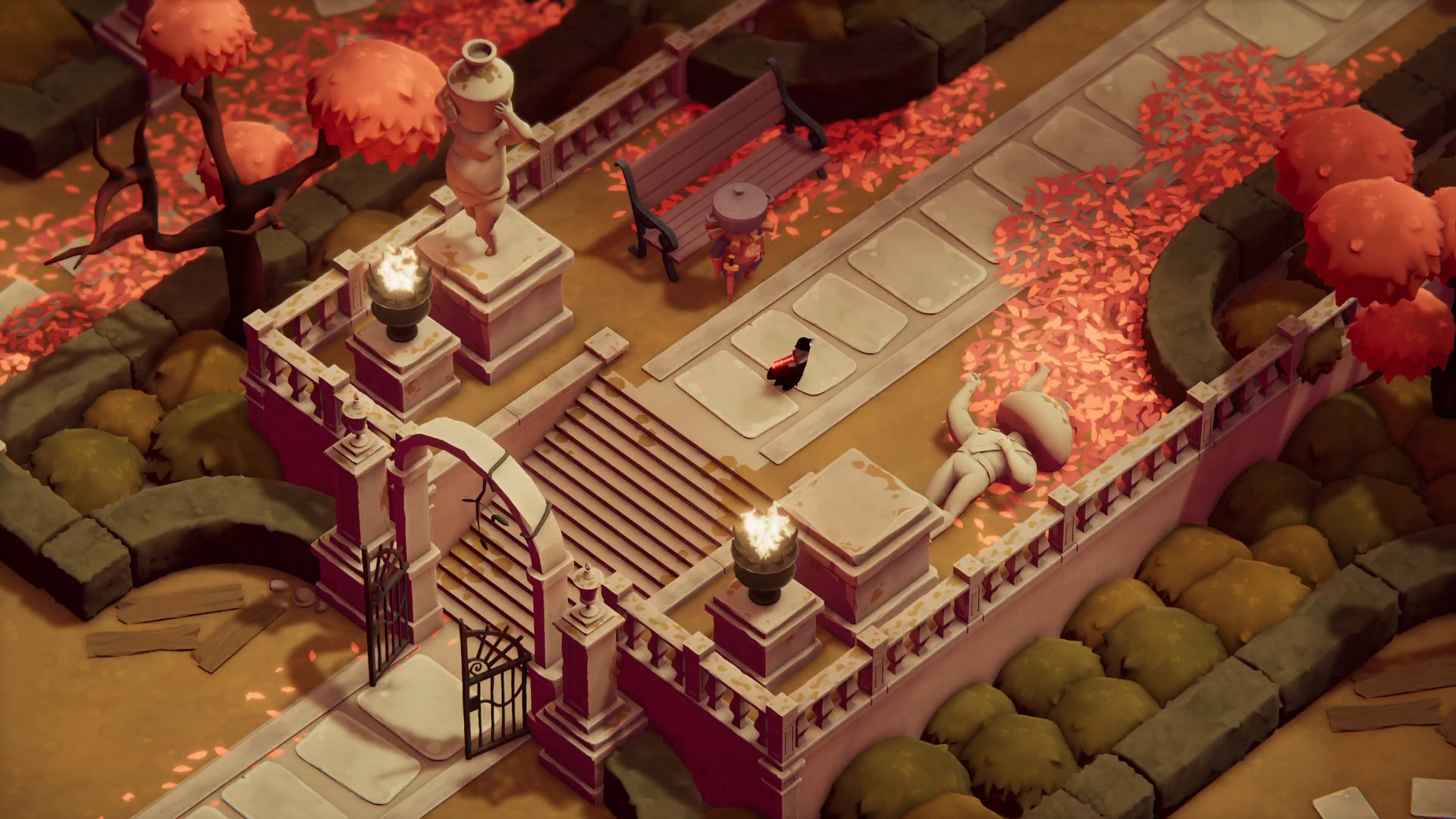 The afterlife apparently is not safe from capitalism (and neither is space at this point, so Tim Curry has nowhere to go!!), and your little crow character is caught up in the middle of it, having to collect some overdue souls for the afterlife... factory, when another crow steals your kill and now has you under his thumb. Being honest, Death's Door made the wait for Tunic so much more bearable that I honestly almost took Tunic off my wishlist. I know that game is not out yet, but it hasn't even made it to the cafeteria yet and Death's Door has already eaten its lunch. This is premiere isometric hack and slash action, with cool dungeon ideas, winding and interconnected maps, beautiful art direction and fun combat. And crows just edge out foxes on the cute list. It's also aware of its budget and scale, so there aren't a million systems going on, and your upgrade paths are simplified into strength, speed, magic and evasion. It's the perfect length to invite a lot of secondary exploration without making you feel like you're wasting your time. If you're not a fan of the kind of Zeldas that Nintendo puts out lately, but you also don't want a panderingly accurate clone (like, say, Blossom Tales), Death's Door evokes the feeling and flavor of the classic experience while also having its own unique identity.  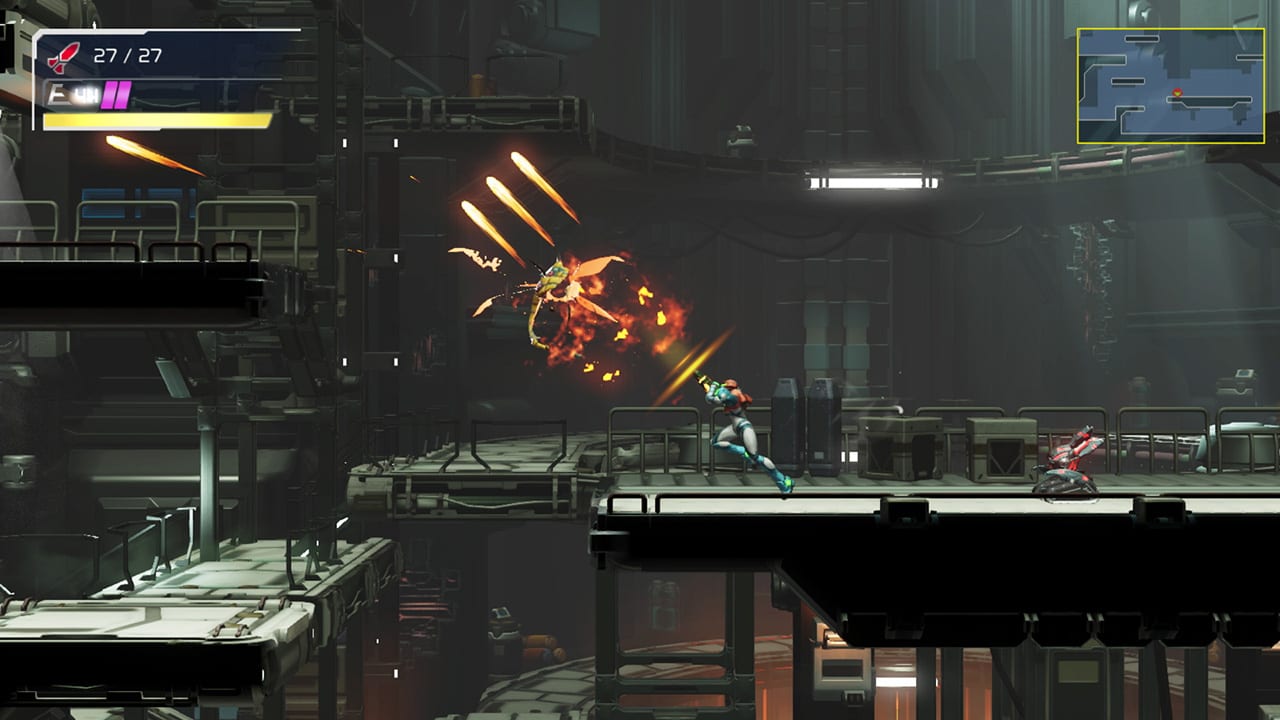 By far the latest addition to this list, arriving at my house on the 30th, Samus is back and she's in the top 5. Yes, I did play this long enough to come to this conclusion, and no, it's not extreme recency bias (there are other games I played in the past couple of days that are all over the place in terms of where they ranked). What makes Dread so successful is its commitment to the bit: this is Metroid plus survival horror. Unlike Fusion, which only occasionally pitted you against an unstoppable enemy, Dread is full of relentless predators to sneak around until you find the ability to destroy each one, one at a time. But beyond that, enemies do a fair bit of damage to you and they're everywhere. You really feel like this is a situation where Samus has gotten in way over her head. But unlike the other plated hero mascot game I touched on near the bottom of the list, Dread actually does hit the power fantasy right. Interactive boss cutscenes where you get to wail on enemies and not just watch a QTE play out, a plethora of upgrades all throughout the world, a satisfying parry counter that helps you take down even the most obnoxious and damaging enemies. You are also not completely stripped of upgrades this time, as you start with missiles and can hang on ledges and walljump right away. But once you start finding the upgrades, they come fast and furious. I've only played for a few hours and I've already got multiple beams, the varia suit, the morph ball, and the spider magnet. Graphically the game is full of rich detail, each room with background details that weren't necessary but deepen the depth of each area. Discarded supplies and belongings, craggy caverns where beasts run through, abandoned dig sites. I don't know how they pulled it off, but Dread's soundtrack feels like a modernization of the Super Metroid music style, with those same blurred low horns and synths, only recreated with today's tech. It's really something else. It pulls you right into the atmosphere, as do the seamless transitions between gameplay and cutscene, as EMMI bots notice your arrival, or something lurks around the corner when you enter a room. If I had only one complaint, it's that the controls are not remappable. Which you can do at a system level, but it just seems weird that Nintendo is still the furthest behind on accessibility compared to their competitors when they claim to be casting a wider audience net.   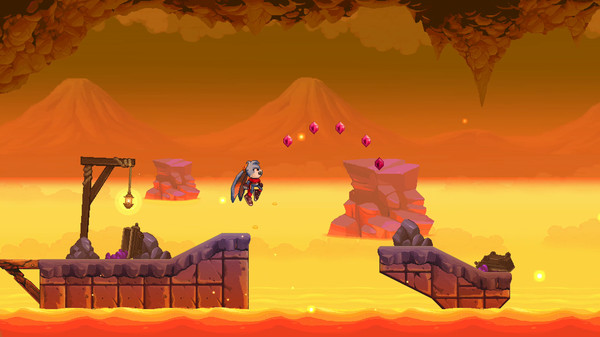 If it isn't obvious enough from having read through my list, I never get tired of a good platformer. It's a maligned genre that gets a lot of hate for being so ubiquitous, but a well designed platformer can still be great fun. Even more-so when it draws inspiration from Donkey Kong Country. Compared to the DKC Returns series, Kaze opts for something closer to the SNES trilogy, and does so masterfully. It has a beautiful 32-bit look remniscient of PS1 platformers like the original Rayman. Its unique gimmick involves different masks that change your ability set, from a mask that gives you flight, to a mask that lets you swim underwater, to a mask that turns the game into an auto-runner. Like any good platformer (and especially the Countries), every level either focuses on a new mechanic/trick, or remixes various previous level gimmicks to challenge you. And, perhaps being too on the nose, there are letter collectables, secret bonus areas, and jewels to earn by getting all the gems in a level. Mostly, it gets this high because it just plays great and looks great and stays great throughout, ducking out before the game runs out of gas.  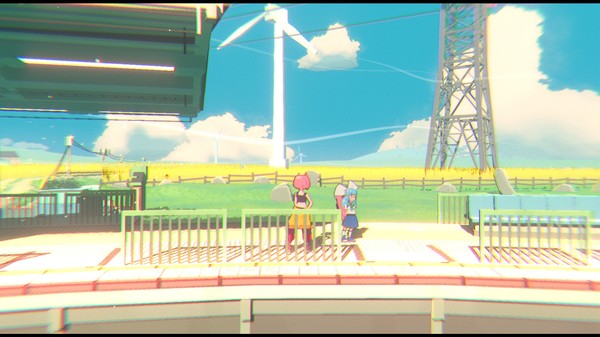  I've been a fan of rhythm games for over two decades, since playing the demo of Parappa the Rappa on a PSX Jampack disc. While I wasn't importing every Pop'N'Music, I was one of the ten people who bought beatmania PS2 -and- the controller.. like an idiot, haha. It didn't work with anything else in the US, why did I do that?? Getting back on track, I've always been a fan of character-based music games. It's easier for me to get into a music game if there's a world it takes place in... if I'm playing as a dog rapper or a loser kid who turns into a guitar superhero. Unbeatable is an attempt to bridge the gap between the character-based music game and the more traditional chart-based games, and it is not only fantastic, it's free. Released as a sort of 'shareware' to hype up a fuller sequel down the line, Unbeatable is basically a full playable album in rhythm game form. The controls are simple-- attack high or attack low as notes come towards you, and switch between left and right sides as necessary. There are of course held notes, and the occasional triplet, and rapid attack notes as well. The character aspect comes in the framing device, as you play the lead for a punk band who tells you the story behind each song before each performance and then adds a coda at the end ala Rhythm Heaven if you play well. The aesthetic is what the kids call, 'fire', and the music rocks. The sounds on hit notes are nice and crunchy and the screen is full of all the good screenshakes, bells and whistles that make 'playing' the songs all the more engaging. There are a couple of serious earworm anthems here, and it's a VIBE, like if The Pillows were commissioned to make a power pop album, that real summer vibe, y'know. Freeware gaming has had a long rich history in the indie gaming scene, and while free usually means gacha games today, sometimes you still get a game where you're just like, "how the hell is this free?" The developers are still giving updates to this release as well, adding remixes, while simultaneously working on the full story game to come in 2022-2023. If you at all like music games and millenial vibes you have to give this a go.  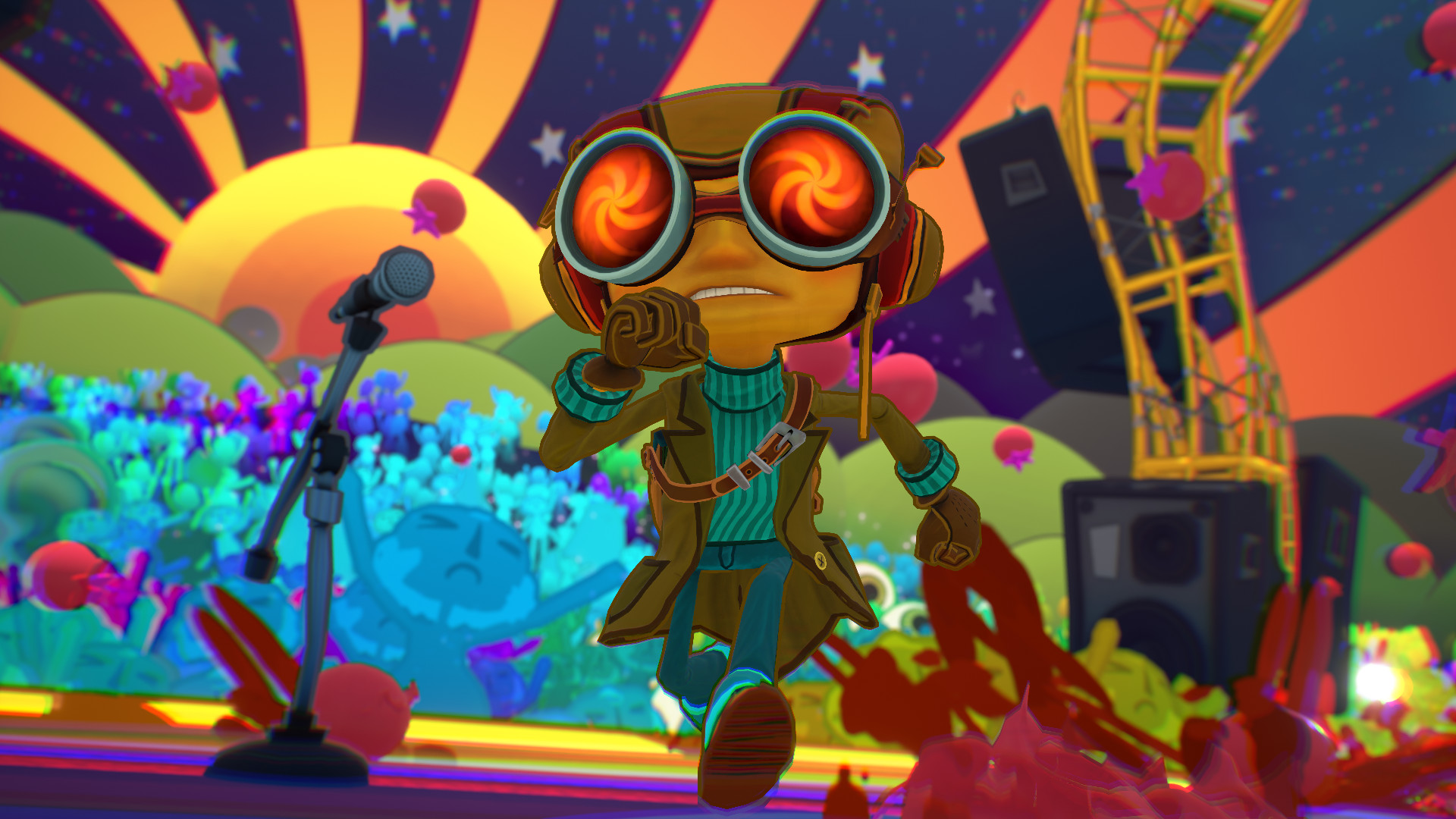 When Doublefine had announced a sequel to the game that put them on the map, my feelings were mixed. I actually liked Broken Age more than others did, but there's no doubt that the company's track record has been extremely mixed. Whether it's the genre bait-and-switch of Brutal Legend, or the dump-and-run nadir that was Spacebase, it'd take a while for the studio to rebuild their goodwill (personally, I enjoyed Hack & Slash and Headlander). This was different, though. Psychonauts was one of the most creative games of the PS2 era, a fusion of 3D platformer and point n click adventure that had a little bit of everything, from conquering regions on a giant board game, to sabotaging a play, to climbing the world's most insane circus tent (sorry for the memories!). And Doublefine was a studio that had, well, significantly limited their ambitions in the decades since. Implausibly, Psychonauts 2 was better than my wildest expectations. It blew me away. From the fluid movement, to the wonderful platforming playgrounds, to the sheer variety of worlds and activities, Doublefine took every dollar of Microsoft's acquisition and made it count. Each new level is something strange, something unique, something that changes things up considerably. And I loved every minute of it. Honestly, I could spend hours in the campgrounds area, with all the treetops and signs to climb, a working funicular, the family tent, the massive reverse waterfall, there's just so much to play around on and get on top of. From the personal life of Rasputin and his family and the complicated dynamics therein, to the goofball classmates, to the sequel's significantly improved sensitivity towards mental health issues, the game's story soars like some of the best Pixar films. I enjoyed not just the overriding story but also the story arcs that play out inside of every character's mind as you get to the root of their problems, and Raz realizes how powerful and dangerous his abilities truly are. If this is the end for Psychonauts (and given the 20 year gap, it's certainly possible), it couldn't have gone out on a higher note.
|
|
|
|
BabyRyoga posted:Good, detailed list from The 7th Guest with many things I had not heard of or just plain forgot about that I will need to try. Like I said before though, Humble Games crushed it this year. Canít wait for Chinatown Detective Agency!
|
|
|
|
Real hurthling! posted:Anybody got some good category goty's to tide us over until the results? Best Platformer: Psychonauts 2 Best Action Game: Death's Door Best Story Game: Lacuna Best Point'n'Click Adventure: If On A Winter's Night, Four Travelers Best JRPG: Undernauts (only because I didn't play SMTV or Blue Reflection 2 yet) Best FPS: uhh I guess there's bow and arrow shooting in The Forgotten City Best Chill and Relax Game: TOEM Best Art Direction: Psychonauts 2 Best Music: Unbeatable (Cyber Shadow is close though) Game I Regret Not Getting To in Time: Chicory (Sable runner-up) Since I covered universally 2021 releases, now some awards for non-2021 games I played this year... Worst Genre: Indie Horror. It's always Indie Horror. The big releases in the past year+ were Visage and The Medium and they both were awful. Visage was yet another PT knockoff that had no charm or unique vision, and The Medium was a loving joke. I will say that Devotion is a fantastic story, although as a horror game it's not 100% a success, but at least that's SOMETHING, good for Red Candle for being able to save it. Uh another one I played this year was The Beast Inside? That was half interesting half regurgitated slop. I still have Amnesia Rebirth to play and I'm hoping that at least is competent. There are just too many indie horror games that rely on cheap jumpscares, creepypasta, flashlights with the world's worst batteries, and looping hallways. All the best stuff on the Haunted PS1 Demo Disc this past year were the more out there and strange titles and not the horror ones (though I did like the aesthetic of Chasing Static). I'm hoping that 2022 will break the curse. Best Mobile Game: The one I ended up playing the most was Taiko no Tatsujin Tap Pop Beat; basically a port of the console Taiko to Apple Arcade with several dozen songs including Cruel Angel's Thesis and Babymetal. Apple Arcade was kind of underwhelming this year compared to the past couple of years-- the biggest release (Fantasian) was the worst 2021 game I finished this year, and games like Baldo were clearly not ready for primetime with massive bugs and softlocks. It looks like Apple is trying to swing the service in a "no-ads version of games" direction now so I don't know if my subscription will survive 2022. The best non-2021 is Katrielle Layton which I have not finished yet, but like someone else mentioned in this thread, it's nice for bite-sized puzzling. Most Obscure Game I Played This Year: Besides the ones I listed on my HM and top 69, probably Pear Potion. It was basically a Hero Core style game about gay witches that ran for only an hour and was like two bucks. It was fine but didn't really stand out in any way so that's why I didn't place it. Willy Jetman would probably be the other, a platformer with a jetpack and shmup-like weapons that definitely feels inspired by Speccy games but without the adventure elements. Biggest Bundle Surprise: Family Man... came in a Humble Choice bundle, and is a lot better than the art style made it seem. You basically are in debt to the mob and have to find a way to pay up each day to keep your family alive, while also taking care of your family and spending time with them. You might have to spend the night out doing dirty work, or you can be a beachcomber and sell all sorts of junk and recyclables, or you can get a part-time job, or help people out with sidequests to make some money. It's a bit amateur in its art and presentation but it was pretty addictive. Favorite VR Game: I had gotten an HP Reverb G2 so I played through a lot of Viveport stuff. I mentioned Vertigo Remastered and The Room VR in my honorable mentions. I'll also give a shout out to A Fisherman's Tale (which I think got ported to Quest recently) and Down the Rabbit Hole. Down the Rabbit Hole is maybe more an all-ages game, but it's a fun take on Alice in Wonderland where you are basically in the rabbit hole as dioramas are cut into the walls where the characters interact... and you climb up/down plant roots and rotate around to follow the action. I also thought FORM was neat, a The Room like game but more sci-fi and abstract. Most Anticipated 2022 Game: NORCO. I think it has the potential to be the next Kentucky Route Zero -- not in terms of its gameplay (which is more in line with ICOM style adventure games), but just the magical realism and earnest near-future depiction of a real American setting (a factory town in Louisiana). Word I Use Most In My Game Descriptions: Basically The 7th Guest fucked around with this message at 18:22 on Jan 1, 2022 |
|
|
|

|
| # ¿ Apr 24, 2024 01:53 |
|
i forgot to include it in my graphics but these are the games on my list that are on Gamepass if you want to give them a try: Psychonauts, Recompile, Flynn: Son of Crimson, Unpacking, The Gunk, Unsighted, The Forgotten City, Subnautica: Below Zero, Echo Generation, Backbone, Deedlit in Wonder Labyrinth, Mind Scanners, Last Stop, The Good Life, Mighty Goose, Library of Ruina, Omno, Boyfriend Dungeon, Halo Infinite, Moonglow Bay, Scarlet Nexus and this was my favorite video game track of 2021 https://www.youtube.com/watch?v=Ux3HGFb2HTg followed by https://www.youtube.com/watch?v=tQjUHtkN7MU
|
|
|

